#Key Filmmaker | Post-War Era
Explore tagged Tumblr posts
Text
The Father of Modern Arthouse: How Renowned Russian Director Andrey Tarkovsky Transformed World Cinema
The Soviet Union's Key Filmmaker of the Post-War Era Laid the Foundation for the Kind of Output taken for Granted by Movie Lovers Today
— April 28, 2023 | RT
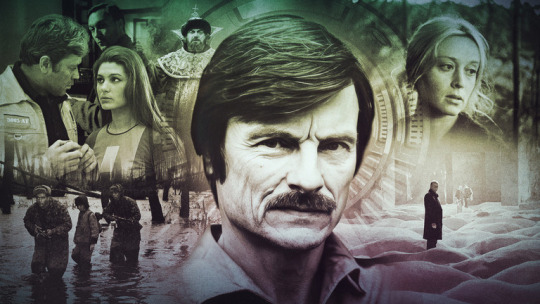
In the history of world cinema, the Soviet Union had two standout periods – the 1920s, during the boom of avant-garde cinema, and the late 1950s and early 1960s, during the "Khrushchev Thaw" (which was named for the opening up of society under the eponymous Nikita, after the years of terror under Joseph Stalin).
While the legendary Sergei Eisenstein, and other giants of the pre-war period, developed techniques that influenced the filming and montage of modern blockbusters, pictures of the latter period inspired arthouse genres.
Among the many post-war Soviet film directors, Andrey Tarkovsky had the greatest impact on world cinema. In 2018, the term “tarkovskian” – describing his unique “slow” and meditative style – was added to the Oxford Dictionary. Since Tarkovsky’s death in 1986, the influence of his cinematic style has spread from international film festivals to rock music clips and even video games.
Tarkovsky has a complicated reputation. His movies are often called “slow” and “boring." However, he remains the only Russian filmmaker of the second half of the 20th century whose work has become a yardstick for representatives of arthouse cinema, and whose name has inspired a search for a successor – for example, Mexican filmmaker Alejandro Gonzalez Inarritu and the Russian Andrey Zvyagintsev have both been called the “new Tarkovsky.”
What is it that makes Tarkovsky and his work so unique?
War, Home, and First Films
He was born in 1932. His father was poet Arseny Tarkovsky and his mother Maria – who later became the main character of one of his most prominent films, ‘The Mirror’ – was descended from the Dubasov noble family. She also attempted to write, but didn’t manage to build a literary career. Citing a “lack of talent,” she destroyed all her manuscripts.
Although Tarkovsky spent most of his life in Moscow, he was born in the village of Yuryevets in the Ivanovo region (about 500km northeast of the capital). After World War Two broke out, he was evacuated there with his mother – by that time his father had left the family. They lived in the village for just two years, but the wooden house would later reappear in ‘The Mirror’ as a symbol of an idyllic childhood. Throughout his life, Tarkovsky was haunted by the utopian image of “home.” In his films, a happy domestic life exists only in dreams (e.g., the central character's “lost” younger years from ‘Ivan's Childhood’) and memories. Meanwhile, Tarkovsky’s adult heroes often leave home (‘Solaris’), search for it (‘Nostalgia’), or destroy it (‘Sacrifice’).
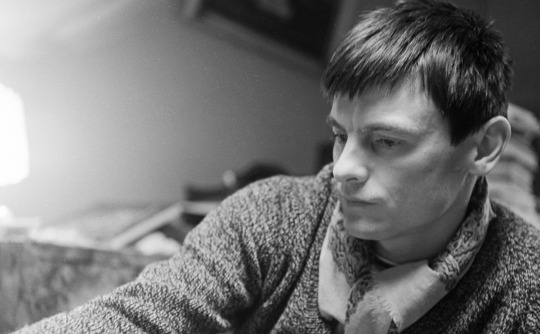
Andrei Tarkovsky © Sputnik/Alexander Makarov
In 1954, Tarkovsky entered the VGIK – the USSR’s most famous film institute. The beginning of his studies coincided with the Thaw period of cinema, which was radically different from previous Soviet movie eras. Young filmmakers who had gone through the war, or encountered it as children, were at the center of this new wave. During the Khrushchev years, the traditions of Stalin-era war cinema were reimagined. Similar processes occurred in other countries that contributed to the victory in WWII. The new motion pictures focused not on soldiers and battles, but on the unseen victims of the war for whom there was no place in Stalin's movies.
In the same year as Tarkovsky was admitted to VGIK, French critic and future film director Francois Truffaut published an article titled ‘A Certain Tendency of the French Cinema,’ where he formulated the Auteur Theory. Truffaut described how the filming process in earlier times was managed by producers and screenwriters, but how the director had become the key figure on the set, determining what to shoot and, most importantly, how the footage would be edited. The ‘auteur’ could be a director with an individual style or, as Tarkovsky said, an artist whose personality is “so significant that it determines the artistic qualities of the work.” Yet Tarkovsky was even more radical in his views on the nature of cinema than the French critics. He insisted that ‘auteur’ is a “qualitative concept” stating that, “good cinema is ‘cinema d'auteur.’ A good director is one who has a strong individuality and particular views on the phenomena of life.”
All that remains from Tarkovsky’s student period are several short films and his diploma work ‘The Steamroller and the Violin,’ which is thematically and stylistically close to Thaw cinema. It tells a story of friendship between a child violinist and a steamroller machine driver. Compared to the director's mature works, this traditional and realistic featurette is often relegated to the background. However, this ‘student’ film first shows us the artist-protagonist who is to become the focal point of Tarkovsky's work. His semi-autobiographical characters that grow up alongside their author – from the little musician of this debut work to the elderly writer from his final film, ‘The Sacrifice’ – invariably face the unknown, whether it is a socially-distant driver of a steamroller, the wish-granting room of ‘Stalker,’ or the divine revelation of his last movie.
Tarkovsky did not consider ‘The Steamroller and the Violin’ a great success and did not like talking about it. However, the film did its job – the director graduated from the institute with honors.
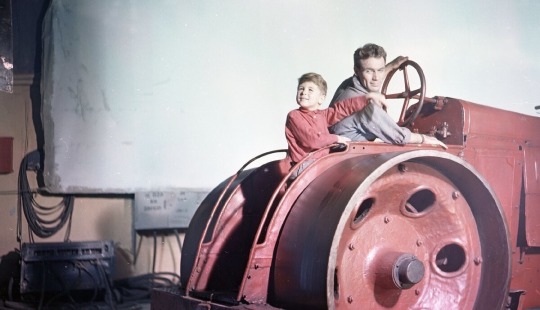
'The Steamroller and the Violin' (1960) Directed by Andrei Tarkovsky © Mosfilm
Global Recognition and First Conflicts With The Authorities
Tarkovsky's first full-length picture was the war drama ‘Ivan’s Childhood.’ Initially, this film – based on the story ‘Ivan’ by Vladimir Bogomolov – was shot by another director. However, Mosfilm Studio found that version “unsatisfactory.” It was particularly criticized for the free treatment of the original text in which the young partisan, Ivan, who was killed at the end of the story, instead survived in the movie and went on to volunteer in the Virgin Lands campaign. This new ending wasn’t approved by Bogomolov and completely contradicted his idea. The writer recalled how he contacted the newspaper which published an article about child partisans with an appeal, “Young heroes, respond!” As Bogomolov found out, no one responded – because no one had survived.
Tarkovsky was given limited time and the remaining budget to shoot his version. He significantly reworked the original text, focusing on the inner world of the child partisan Ivan. Dreams became key to his story. In these dreams, the boy sees his lost mother and lives a happy childhood. In ‘Ivan's Childhood,’ the ‘real world’ doesn’t hold back the dark, repressed desires of the subconscious. On the contrary, this real world is dark and cruel. As film critic Oleg Kovalov writes, the paradox of war is that “the poor child’s striving towards harmony, light, peace, and kindness become an almost shameful desire, a secret perversion.”
‘Ivan's Childhood’ won Tarkovsky the Golden Lion at the Venice Film Festival and brought him worldwide fame. At that time, ‘Thaw cinema’ was popular abroad and often received prizes at international festivals. In 1958, M. Kalatozov's war melodrama ‘The Cranes are Flying’ won the Palme d'Or in Cannes, and in 1961, G. Chukhray's film ‘Ballad of a Soldier’ won the BAFTA Award. Like ‘Ivan's Childhood,’ these movies looked at the war in a new way, moving away from heroic narratives and turning to the stories of its victims.
Tarkovsky's next movie was a medieval drama about the great painter of icons – Andrey Rublev. Despite a deep immersion in the medieval era, the director wasn’t obsessed with accurately reflecting the realities of the 15th century. In Tarkovsky's movie, Rublev, whose biography is practically unknown, is shown as an artist working in the horrible conditions of internecine wars, famine, and surrounding violence. His Rublev is a far cry from the ‘artist inspired by the people’ – the image approved by party officials. Tarkovsky has Rublev go through a loss of faith in people so that he may regain it in the finale after meeting the young bell caster Boriska. In an interview unpublished during his lifetime, Tarkovsky says that “the artist is the conscience of society” and the person who’s most sensitive to changes.
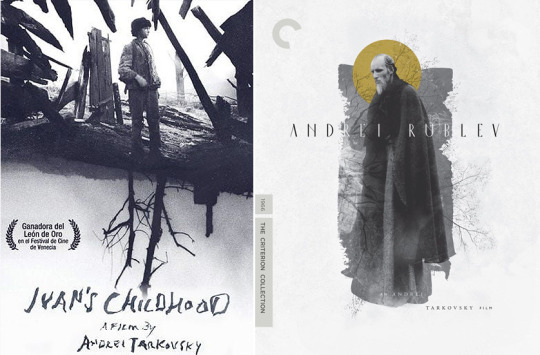
'Ivan's Childhood' (1962); 'Andrei Rublev' (1966) Directed by Andrei Tarkovsky © Mosfilm
During the production of ‘Andrey Rublev,’ a conflict first emerged between Tarkovsky and the Soviet officials who oversaw the studios. The movie was constantly edited, the major scene depicting the Kulikovo Battle didn’t get the required funding (after the film’s release, the press criticized the director for cutting this scene during final edits), and Tarkovsky was accused of excess violence. Eventually, the work was cut by 30 minutes and allowed only limited release three years after it was completed.
Aesthetic Dissident
After two movies focusing on past experiences, the events in Tarkovsky’s next picture unfolded on a space station in the near future. Despite the science fiction genre, ‘Solaris’ – a free adaptation of the novel by Stanislaw Lem (the author wasn’t satisfied with the film and said that Tarkovsky shot ‘Crime and Punishment,’ not ‘Solaris’) – is based on familiar themes: the conflict between reality and fantasy, human memory, and loss of home.
Tarkovsky didn't like genre films and entertainment movies, but science fiction provided a greater sense of allegory than historical events. While filming ‘Solaris’ and ‘Stalker,’ he could explore ideas that interested him while also feeling less pressure from the Communist Party. In her book on Tarkovsky, film critic Maya Turovskaya wrote that Tarkovsky was not a political, but an “aesthetic” dissident, and having minimal outside interference in his work was more important for him than political and economic freedom.
In his next movie, Tarkovsky wanted to explore the phenomenon of memory and to set himself free from the conventions of any genre. Initially, ‘The Mirror’ was planned as an interview film in which the filmmaker’s mother was asked a variety of questions – ranging from her own life to the Vietnam War – while being filmed with a hidden camera. Tarkovsky soon abandoned this idea and made a feature film, but one that was unique in its form.

'Solaris' (1972); 'Mirror' (1975) Directed by Andrei Tarkovsky © Mosfilm
Tarkovsky's co-author, screenwriter Alexander Misharin, remembered the first screening of ‘The Mirror’ by the chairman of the USSR State Committee for Cinematography who remarked, “Surely, we have freedom of creativity. But not to such an extent!” ‘The Mirror’ was in many ways the opposite of the director's previous film. The action descended from space to earth, and instead of a clear plot, it was based on a fragmented narrative imitating human memory where characters and events are layered on top of each other. For example, the main character’s mother and wife are played by one actress, which confuses the viewer and blurs the lines between childhood and recent events.
Instead of a simple, almost non-existent plot, the film is based on visual and thematic ‘rhymes’, which is why ‘The Mirror’ is often called “poetic cinema.” The film is based around the memories of a dying man in whose mind wartime childhood memories blend into the landscapes of Pieter Bruegel the Elder, historical chronicles rhyme with personal experiences, and his mother’s memories intertwine with his own.
By the decision of the State Committee for Cinematography, the film was not widely distributed in the USSR, although it was sent to Cannes. The film’s “unfriendly” exploration of consciousness and memory sealed Tarkovsky's status as an ”aesthetic dissident."
The director’s last movie in the USSR was ‘Stalker’ – a fantastic parable about the journey of the three main characters to a place where secret wishes are fulfilled. The filming process was accompanied by a series of misfortunes: the script was rewritten over ten times, the movie had to be reshot due to a technical issue in which several thousand meters of film were improperly developed and ruined, and Tarkovsky suffered his first heart attack. Stalker acquired the reputation of being a ‘cursed movie’ when, following the premiere, several members of the crew died within a short time, including the director's friend and one of his regular actors, Anatoly Solonitsyn, who played the role of the Writer.
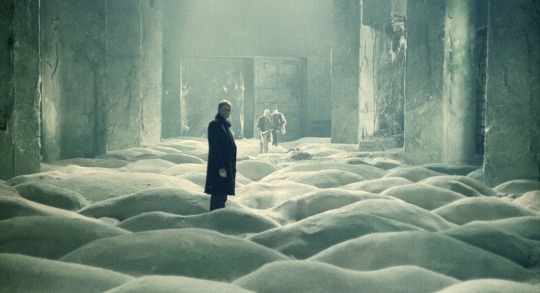
'Stalker' (1979) Directed by Andrei Tarkovsky © Mosfilm
After the futuristic ‘Solaris’ and the experimental ‘Mirror,’ ‘Stalker’ seems almost ascetic. Tarkovsky’s late works increasingly gravitate towards compositional simplicity and limited space – “finding a reflection of infinity in a small space.” For example, the characters in ‘Stalker’ don’t have real names, only nicknames (Stalker, Writer, Professor), and the picture’s post-apocalyptic world is much closer to the stagnant Soviet Union than the ‘city of the future’ from ‘Solaris.’
Conflict With The Authorities
Tarkovsky shot only seven full-length films in his 25 years of filmmaking, but up to the very end of his life, he had many creative plans. One of these was to work on a film in Italy – and in fact, this turned into the movie ‘Nostalgia.’ Tarkovsky waited for permission to start filming for over three years. He finally obtained it with the help of Italian screenwriter Tonino Guerra, who had some influence over Soviet officials. With Guerra, Tarkovsky began writing the script about a man traveling through Italy.
In 1980, Tarkovsky went to Italy to prepare for filming. While there, he had the chance to compare two styles of filmmaking – Soviet and Western. Tarkovsky didn’t have a preference for either and pointed out the shortcomings of each. While capitalist society gave the artist full freedom of expression, it also provided fewer opportunities for making his idea come to fruition.
In many ways, ‘Nostalgia’ anticipated Tarkovsky’s own future fate. The main character is a Russian writer who, like the protagonists of his previous films, travels not so much through Italy as through the realms of his own memory. Tarkovsky reveals the inner experience of emigration where the protagonist is stuck between two worlds, fully belonging to neither of them.
Tarkovsky did not initially plan on permanently leaving the USSR. Despite the fact that he and his wife were allowed to go to Italy, his son and mother had to stay in the USSR. Andrey Tarkovsky Jr. later said that they were left as “hostages” in the Soviet Union to prevent his father from permanently emigrating to the West. What exactly happened remains unknown, but apparently the leadership of the State Committee for Cinematography decided that Tarkovsky had become a so-called “non-returnee” and that he did not plan on coming back to the USSR. His name was banned from print in the USSR, and the Soviets withdrew from the production of ‘Nostalgia.’

'Nostalgia' (1983) Directed by Andrei Tarkovsky © Sovinfilm
Tarkovsky's letters to the general secretaries of the CPSU Central Committee Yuri Andropov and Konstantin Chernenko, in which he asks to work and live in Italy with his family for three years, have been preserved. The filmmaker emphasized that his last picture, ‘Nostalgia,’ was about “homesickness experienced by a Soviet person temporarily finding himself abroad” and that he had no plans to emigrate.
While Tarkovsky worked in the USSR, his relations with censors got progressively worse. At the premiere of ‘Nostalgia’ at the Cannes Film Festival, the Soviets, represented by film director Sergei Bondarchuk, went to great lengths to make sure that Tarkovsky would not receive the main prize. The confrontation ended in an open conflict. In a letter addressed to Secretary General Chernenko, Tarkovsky stated 11 points that demonstrated unfair censorship of his work. Among these were: illegal restrictions on the public release of his films, boycotts by USSR awards committees and film festivals, no press coverage, and the sabotage of ‘Nostalgia’ in Cannes. The betrayal he experienced in Cannes and in his homeland convinced Tarkovsky not to return home. In the summer of 1984, Tarkovsky announced his decision to stay in the West.
Farewell
‘The Sacrifice’ became Tarkovsky's last movie, most of which was filmed in Swedish. Tarkovsky was invited by the Swedish Film Institute, which covered most of the film's expenses. He was a big fan of the great Swedish filmmaker Ingmar Bergman, who lent the Russian director part of his own film crew: Bergman actor Erland Josephson played the leading role, cinematographer Sven Nykvist, who worked with Bergman on all his main films, was the cameraman, and the filmmaker’s son, Daniel Bergman, was his assistant. Moreover, Josephson and Nykvist invested some of their own funds into the film, becoming its co-producers.
By the time filming was over, Tarkovsky was diagnosed with lung cancer. ‘The Sacrifice’ – the story of an aging man who sacrifices his regular life and burns down his house to prevent a nuclear war – is often called ”prophetic." It stands as both the final testament of the dying filmmaker and a prophecy of the Chernobyl disaster that occurred just a few weeks before the premiere.
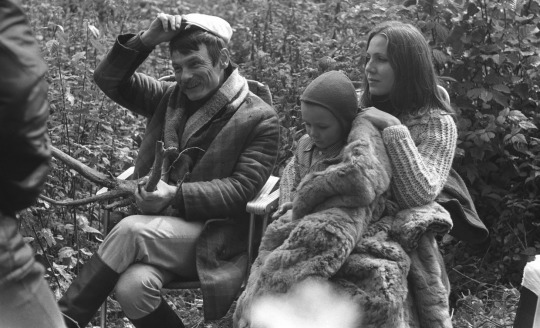
Film director Andrei Tarkovsky on the set of the movie 'Stalker' in 1977. In the picture: Andrei Tarkovsky and Larisa Tarkovskaya. © Global Look Press/Igor Gnevashev/Russian Look
Five years after Tarkovsky’s departure from the USSR, his sixteen-year-old son was allowed to visit his sick father. According to Alexander Gordon, a friend and co-author of Tarkovsky’s early works, party officials knew about Tarkovsky's diagnosis, but for a long time did not disclose it to his family. At that time, Tarkovsky’s previously banned movies were once again released in the Soviet Union.
Tarkovsky died at the end of 1986, at the age of 55. A few days later, the USSR State Committee for Cinematography released an obituary, expressing “bitterness and regret” that the filmmaker had worked away from his homeland in his final years.
Tarkovsky was buried at the Sainte-Geneviève-des-Bois Russian Cemetery near Paris – the final resting place of many Russian émigrés, writers of the Silver Age, and members of the White Movement.
#Renowned | Russian 🇷🇺 | Director | Andrey Tarkovsky#The Father of Modern Arthouse#Soviet Union#Key Filmmaker | Post-War Era#Laid | Foundation#Movie Lovers#Global Recognition#Conflicts#Authorities#War | Home | First Films#Aesthetic Dissident#Farewell
3 notes
·
View notes
Text
One of Russia’s most famous 20th-century novels has returned to the Silver Screen. Infamously difficult to capture as a motion picture (more mystical observers even speak of a curse), Mikhail Bulgakov’s “The Master and Margarita” is back, reinterpreted by American-Russian filmmaker Michael Lockshin. The new movie stars Evgeny Tsyganov and Yulia Snigir in the titular roles and features German actor August Diehl (Gestapo major Dieter Hellstrom in Quentin Tarantino’s “Inglourious Basterds”) as the story’s demonic character Woland. Meduza reviews the controversy surrounding the film’s director and funding, the book’s cinematic history, and Lockshin’s adaptation.
The political controversy
Michael Lockshin’s “The Master and Margarita” averages an impressive 7.9/10 rating with more than 43,000 reviews at KinoPoisk and leads Russia’s box office in its opening week after earning 57.3 million rubles ($640,000) on its first day in theaters, but the director was making enemies before his film ever sold a single ticket. Self-described patriots denounce Lockshin as a Russophobe, a traitor, and a neoliberal besmircher of the intrepid Soviet secret police. They call him a hypocrite, too, in light of the fact that this new adaptation of Bulgakov’s classic was made (in 2021, before the full-scale invasion of Ukraine) with 800 million rubles ($8.9 million) from Russia’s Cinema Foundation, the state’s key funding agency for the domestic film industry.
Lockshin, who now resides in the United States, declined to answer Meduza’s questions about the backlash in Russia, saying he’s not yet ready to comment on the situation. On Telegram, pro-war channels have circulated screenshots of Facebook posts that are now hidden from non-friends where Lockshin shared independent reporting about the war in Ukraine, wrote that he’s donated to Ukrainian organizations, warned that future generations of Russians will be paying reparations for the “tragedy they brought to Ukraine,” and compared the Putin regime to Nazism in Germany.
State propagandist Tigran Keosayan has advocated criminal charges against Lockshin, while Trofim Tatarenkov, a host on Russia’s state-run Sputnik radio (who admits that he hasn’t even seen Lockshin’s movie), called the filmmaker “scum” and fondly remembered how such “enemies of the people” were shot during the Stalinist era.
Previous adaptations
In May 2016, poet and literary critic Lev Oborin wrote an essay for Meduza answering several “questions you’re too embarrassed to ask” about Bulgakov’s “The Master and Margarita,” including the most shameful of all: Can I just skip the book and watch a movie version instead? The short answer is, yes, you can always skip the book. In fact, unless you’re a student or some other kind of hostage, you can skip the movies, too. But since you asked, there are at least two previous screen adaptations of “The Master and Margarita” worth knowing about.
The better-liked version, at least until now, has been Yuri Kara’s 207-minute film, made in the mid-1990s but not released until August 2011. Meanwhile, in 2005, Vladimir Bortko created a miniseries for Russian television that was criticized for uneven casting and even worse special effects. Unfortunately for Bortko, the 10 episodes drew deeply unfavorable comparisons to his beloved 1988 adaptation of Bulgakov’s “Heart of a Dog.”
It’s also tempting to contrast Bortko’s miniseries with Kara’s adaptation — particularly how the two portrayed one of the novel’s most visually scandalous scenes: Satan’s Grand Ball. Filmed almost a decade later and made for TV, the sequence in Bortko’s series “looks almost puritanical” compared to Kara’s film, noted Lev Oborin. In raw terms of nudity and violence, this assessment is hard to contest:
youtube
So, is Lockshin’s adaptation any good?
Anton Dolin (a prominent Russian film critic who might be best known to casual Internet users as the interviewer who provoked Ridley Scott into saying, “Sir, fuck you. Fuck you. Thank you very much. Fuck you, go fuck yourself.”) liked Lockshin’s adaptation quite a bit. In a review published by Meduza, Dolin writes that the film “manages to retain the sharpness of the original source, which mocks Soviet power, and at the same time offers the viewer an innovative perspective on a classic text.”
Dolin praises Lockshin’s “Hollywood flourishes” and his capacity to juggle the book’s “genre and intonation incompatibility,” which has plagued past interpretations. The new adaptation brings a “circus element” to the story without sacrificing the script’s “rigidity,” says Dolin, while also “condensing the vastness of Bulgakov's novel into a coherent and clear narrative.” (You’ve been warned, formalists.)
Lockshin’s film takes some liberties with Bulgakov’s classic. For example, in the novel, the Master character doesn’t emerge until the middle of the book, leaving the reader to wonder about the title. In the new film, however, the main plotline belongs to the love story between Margarita Nikolaevna (the unhappily married wife of a Soviet functionary) and a writer she calls the Master. According to Lockshin’s script (which he co-wrote with Roman Kantor), the secondary narrative involving Pontius Pilate’s trial of Yeshua Ha-Notsri (Jesus of Nazareth) is a play within the story written by the Master and pulled from production by Soviet censors after its opening performance. (In a feat of authenticity unprecedented in modern Russian cinema, the Jerusalem scenes, which comprise roughly 10 minutes of the film, are performed in Aramaic and Latin.) Meanwhile, all the adventures across Moscow involving Woland and his entourage are presented as figments of the Master’s imagination as he slowly loses his mind under state persecution.
As Lockshin has argued in comments promoting the movie, Dolin says Bulgakov’s novel enjoys heightened relevance in contemporary Russia, and the new film makes menacing villains of NKVD executioners while presenting even more revolting characters in the Soviet elites whose conformity and hypocrisy enabled the Stalinist regime.
Dolin praises the decision to cast August Diehl as Woland, the mysterious foreigner whose visit to Moscow sets the plot rolling in the novel. Diehl’s Woland “is a real find,” Dolin writes. The German actor plays the character as “an infernally sarcastic gentleman in black” who resembles Satan “more than the thoughtful, sad wisemen from various Russian interpretations of the same character.”
A cartoonishly scary foreigner, complete with a spooky German accent, Woland turns out to be the creation of the writer’s wounded mind, his alter ego, writes Dolin. The censorship and persecution the character faces in the film are a “chilling reproduction” of mechanisms that resonate more in Putinist than Stalinist Russia, Dolin argues, highlighting some lines that wink boldly at modern-day realities, including nods to Crimea, oil production, and military parades.
Lockshin’s adaptation also features a fantastical version of Moscow that recalls the visionary designs of artists in the Higher Art and Technical Studios, which flourished in the 1920s before crumbling under Stalinism. In this universe, Moscow completed the Palace of the Soviets, altering the skyline in a delirious finale that depicts the city ablaze. This scene, in particular, has upset several state propagandists.
Dolin notes that Margarita is absent from the story for much of the film, but she reappears in the final act as a heroine on her own narrative arc. In the character’s scenes as a witch and then a queen, Lockshin’s intentions and the meaning of the novel’s title finally become clear, says Dolin:
It’s not the imagination of the writer that transforms the grim reality but exclusively the emotion that is capable of elevating you to the heavens, of burning cities, and punishing or pardoning with the mere force of thought. In the end, Lockshin’s film is not about Satan, not about Moscow, not about Pilate, and not about totalitarianism, censorship, or creativity, but about love. It alone makes a person invisible and free.
23 notes
·
View notes
Text
Dystopian themes in the Prequels
“Looking back is helpful in understanding his work. Lucas started out in the 1960’s as an experimental filmmaker heavily influenced by the avant-garde films of the San Francisco art scene. Initially interested in painting, he became an editor and visualist who made abstract tone poems. His first feature, THX 1138 (1971) was an experimental science fiction film that presented a surreal, underground world where a dictatorial state controls a docile population using drugs. Love and sex are outlawed, procreation is controlled through machines, and human beings shuffle meaninglessly around the system.”
—Anthony Parisi, 'Revisiting the Star Wars Prequels'
The bolded parts in this description correspond with the Coruscant Underworld, the Jedi Order’s code, and the creation of the clone troopers, respectively.
Notably, in THX 1138's setting, emotions such as love and the concept of family are taboo:

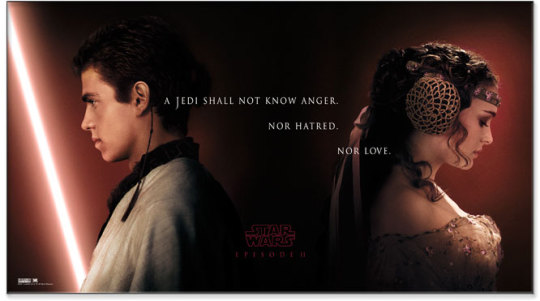
I’ve always found it so interesting that Lucas incorporated the dystopian elements of his earlier sci-fi into the Prequels, taking place as they do in the context of the final years of the Repubic, with all its colourful and sumptuous visual spendour. In comparison, the post-apocalyptic ‘Dark Times’ of the Original Trilogy would seem on the surface to be the more outwardly ‘dystopian’ setting of the two—however, the actual story of the OT is a mythic hero's journey and fairytale, complete with an uplifting and transcendent happy ending. The OT's setting may be drained of colour, and its characters may be living under the shadow of the Empire, but as a story it is far from bleak or dystopian in tone. Rather, fascinatingly, it is the pre-apocalyptic era of the Prequels that is presented as the more dystopian storyline:
“On the surface, [The Phantom Menace] is an optimistic, colorful fantasy of a couple of swashbuckling samurai rescuing a child Queen and meeting a gifted slave boy who can help save the galaxy from the slimy Trade Federation and its Sith leaders. But beneath that cheerful facade is a sweatshop of horrors.” —Michael O'Connor, 'Moral Ambiguity: Beyond Good and Evil in the Prequels'
This is referring to the state of the galaxy during the Prequels era, including the fact that slavery is known to exist, but is largely ignored by the Republic and the Jedi alike due to being too economically inconvenient to combat. It also refers to how the Jedi of the Old Order come across as cold and distant atop their ivory tower on the artificial world of Coruscant, far removed not only from the natural world but also from the true realities of the people they claim to serve. And then there is the additional revelation in Attack of the Clones that love and family are 'outlawed' within the Jedi Order, creating an environment in which their own 'Chosen One' is unable to flourish, leaving him vulnerable to the Dark Side. Finally, there's the fact that the characters end up so distracted by fighting a civil war (something that goes against their own principles and involves the use of a slave clone army in the process), that they are blinded to the entity of pure evil that is guiding their every move...until it is too late.
“Without a clear enemy, the Jedi Order, the Galactic Senate, the whole of the Star Wars galaxy bickers and backstabs and slides around the moral scales. But there is one benefit to Palpatine’s pure evil crashing down upon the galaxy; against its oppressive darkness, only the purest light can shine through.” —Michael O'Connor, 'Moral Ambiguity: Beyond Good and Evil in the Prequels'
If anything, the Dark Times allows for the OT generation's acts of courage and heroism to flourish and succeed, because they are not hampered by the Old Jedi Order's restrictive rules, nor by its servitude to the whims of an increasingly corrupt Republic—so corrupt, in fact, that by the time of RotS, it is practically the Empire in all but name. Indeed, one of the key features of the Prequels, and what makes them so tragic, is that the characters are already living in a dystopia...they just don't know it.
There is, paradoxically, a level of freedom to be found in the midst of the Dark Times which had not been possible during the Twilight era, which allows Original Trio to rise above the tragedy that befell their predecessors. They are able to act as free agents (not as slaves of a corrupt government), serving only the fight for the liberation of all the peoples of the galaxy (not just citizens of the Republic), and are likewise free to live (and love!) on their own terms. Free to act on their positive attachments to one another, without having to hide the truth of their feelings. It's particularly telling that *this* is, above all, what makes the Prequels era so dystopian—the characters' inability to freely and openly participate in normal familial human relationships.
#the prequels#original trilogy#pt x ot#the skywalker saga#the real skywalker saga#lucas' saga#lucas' influences#THX 1138#the twilight of the republic#vs#the Dark Times#the jedi order#jedi discourse#Prequels appreciation#the prequels era as dystopia#the prequels as tragedy#the original trilogy as fairytale#original trilogy era as fairytale#slavery vs. freedom#the dark is generous and it is patient and it always wins#but it is also the context in which the light shines more brightly
203 notes
·
View notes
Text









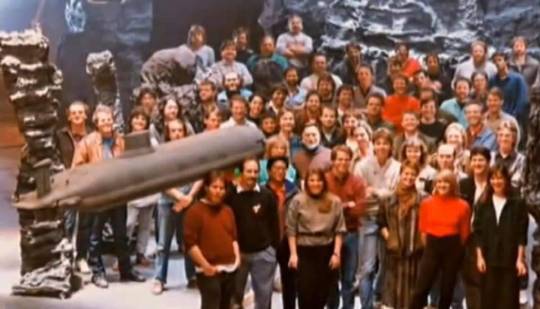
On this date in 1990 “The Hunt For Red October” was released!
Capt. Borodin: “The crew know about the saboteur. They are afraid.”
Marko Ramius: “Well, that could be useful when the time comes.”
Director:John McTiernan
1st AD:Jerry Ballew
Cinematographer:Jan de Bont
Camera operator:Roger Gebhard
1st AC:Cal Roberts
Production Designer:Terence Marsh
Gaffer:Ed Ayer
Key grip:Larry J. Aube
Dolly grip: Michael J. Coo
This is one of my favorite movies so today we’re going on a deep Dive! Dive! Dive! on how this group of dedicated filmmakers brought this movie to life.
The producers originally wanted Kevin Costner for the lead, but Costner had other ideas.
As producer Mace Neufeld explained in a behind-the-scenes DVD feature, "I'd gotten quite friendly with Kevin Costner, and I went to Kevin about playing Jack Ryan. But Kevin was up to his neck, and very enthusiastic, about doing this ... this buffalo movie. And I said, 'You'd rather do a buffalo movie?'".
This was Alec Baldwin’s first big budget starring role throwing himself face first into the role spending time with C.I.A agents and spending the night 600’ underwater in a submarine. He also recommended he personally do the helicopter drop into the ocean. Baldwin accepted the role of Jack Ryan because Harrison Ford turned it down. Cast member Sam Neill also benefited from Ford's refusal three years later by being cast in the lead role of Jurassic Park (1993). Interestingly, Baldwin asked for a big pay increase for the sequel, to which the producers allegedly replied, "For that price, we could get Harrison Ford." Baldwin held his ground and the studio agreed to the fee, but for Ford instead of Baldwin for “clear and present danger”
Sean Connery was a last-minute replacement. The film had been in production for two weeks when word came that Klaus Maria Brandauer (Out of Africa), the Austrian actor who'd been signed to play the rogue Soviet sub commander Marko Ramius, couldn't do it after all because of a prior commitment. Connery took the part instead, needing only one day for rehearsal. Coincidentally, he and Brandauer had acted together in 1983's “Never Say Never Again” and would reunite again for 1990's “The Russia House”, which was shot shortly after The Hunt for Red October.
Mancuso: The hard part about playing chicken is knowin' when to flinch.
"I had reservations about it," Connery told an Associated Press reporter upon the film's release. "I thought this kind of Cold War intrigue might be dated because of recent events(the fall of the U.S.S.R). It turned out that the studio had failed to fax the first page of the script, which explained that it took place before Gorbachev." This is probably why no one ever uses fax machines anymore. After being faxed the script, Sir Sean Connery initially turned the role down on the basis of the plot being unrealistic for the post-Cold War era. Whoever sent the fax neglected to include the foreword, explaining the movie as historical. Once he received the foreword, Connery accepted the role.
After consulting with the hair department behind director John McTiernan's back, Sir Sean Connery arrived on-set for his first day of principal photography with his hairpiece incorporating a ponytail. Several years later, once Connery's potential influence had greatly waned, McTiernan stated in an interview with Sight & Sound Magazine that he was "f---ing livid" with Connery, and that the Scottish actor tried to use his considerable heft with the studio, going over the director's head to pass the alteration with producers. It seemed as though Connery was to get his way until midway through the second day's shooting, when director of photography Jan De Bont started laughing while reviewing the dailies, remarking to Connery that his ponytail looked like "a limp, swinging d--k." This soon became a meme among the crew, and by the end of the second day, Connery was so upset at the mockery, he relented, having the hair department remove the alteration and forcing the re-shoot of a key scene. McTiernan joked that the reported cost of the hairpiece, approximately $20,000, was mainly down to the cost of those subsequent re-shoots.
Jeffrey Pelt: “Listen, I'm a politician, which means I'm a cheat and a liar, and when I'm not kissing babies, I'm stealing their lollipops, but it also means that I keep my options open.”
Screenwriter Larry Ferguson played the role of C.O.B. [Chief (Petty Officer) of the Boat] on the U.S.S. Dallas. He didn’t know he had been cast till he saw his name on the cast list and quickly hired an acting coach having not acted in over 16 years, he quickly started rewrites giving his character more screen time.
The film got an uncredited rewrite—including all of the Russian dialogue—from veteran filmmaker John Milius. The writer of “Apocalypse Now”, and director of “Conan the Barbarian”, and “Red Dawn”—who had directed Connery in 1975's “The Wind and the Lion”—told an interviewer in 2003 that the rumors of his involvement with The Hunt for Red October were true. He said he added speeches for Connery's character ("Make it about me," the actor supposedly told him), and that he "wrote all of the Russian stuff—everything that's Russian in that movie."
In one of the most clever ways I’ve seen a movie ditch the subtitles, this film begins with the actors speaking Russian with English subtitles. As the camera slowly dollies to the mouth of actor Peter Firth he casually switches in mid-sentence from Russian to English on the word "Armageddon", which is the same spoken word in both languages. After that point, the Soviets' dialogue is communicated in English.
During filming, several of the actors portraying U.S.S. Dallas crewmen took a cruise off the coast of San Diego on the USS Salt Lake City (SSN-716) a real Los Angeles-class submarine. To train for his role as the Dallas' commander, Scott Glenn. The real commander Thomas Fargo of the Salt Lake City ordered his crew to treat Glenn as equal rank, first giving reports to him, then give the same report to Glenn. Glenn based his performance of Mancuso on Commander Fargo, giving orders in a calm even voice, even in tense situations, saying "whatever good happened in the performance, basically I owe to now Admiral Fargo, thank you sir."
Made before sophisticated CGI became the norm in filmmaking, the film's opening sequence featured a long pull-out reveal of the immense titular Typhoon-class sub. It included a nearly full-scale, above-the-water-line mockup of the sub, constructed from two barges welded together. Since they didn’t have permission to go out to open ocean they were forced to shoot in Long Beach harbor to create the wake of the open ocean they had boats circling the barge to create waves.
Production designer Terence Marsh and Cinematographer Jan de Bont didn’t want to confuse the audience so they gave each country's submarine its own background color: Soviet submarines, such as Red October and V.K. Konovalov, had interiors in black with chrome trim. American ships, such as Dallas and Enterprise, had grey interiors. To help the audience quickly grasp which sub's interior they were seeing as the movie jumped from scene to scene and sub to sub, the filmmakers also created a subtle lighting scheme: blue for Red October, green for the Alfa class "V.K. Konovalov", and red for Dallas.
During filming in 1989, the U.S.S. Houston, which doubled for the U.S.S. Dallas in the movie, snagged the tow cable between the commercial tugboat Barcona and a barge, sinking the tugboat ten miles off Long Beach, California. One crewman unfortunately drowned, and two more were rescued.
On stage for the sub interiors two 50-square-foot (4.6 m2) platforms housing mock-ups of Red October and Dallas were built, standing on hydraulic gimbals that simulated the sub's movements. Connery recalled, "It was very claustrophobic. There were 62 people in a very confined space, 45 feet above the stage floor. It got very hot on the sets, and I'm also prone to sea sickness. The set would tilt to 45 degrees.
I asked the Dollygrip on the film and crew stories member Micheal Coo about his experience on the and he shared this with us.
“ I’ve got a story for you...
We were shooting in a real submarine and doing a tracking shot down a long corridor. Now about every 15 feet is a bulkhead that you have to step over and make sure you don’t hit your head on the top. We are tracking on a peewee dolly, raised up on track to clear the bulkheads, chasing Sean Connery down the corridor. While chasing Sean, Jan Debont yells cut cut cut, and stands up. There’s no way I could stop on a dime and Jan stood up right before one of the bulkheads. He hit his head so hard he flew over the top of me and I went under him with the dolly. His head sounded like a church bell ringing in the submarine. Since Jan Debont and Sean Connery didn’t get a long so well Sean laughed his ass off at Jan laying there on the floor saying “Fucking Hell Shit Michael, I said cut!!!”
The miniature “underwater” scenes were shot and built by I.L.M and the talented model makers from BOSS films Gregory Jein, John Eaves, Ron Gress and Alan McFarland, they filmed using smoke to simulate underwater with a model sub connected to a 12 cable marionette style frame, giving precise, smooth control for turns the same technique was used for the robot aliens in the film “Batteries not included”. To get the lens to “scrape the paint” of the model to make it feel life sized the crew used mirrors lined up perfectly and the camera lens shoot into the mirror getting the image much closer then it would have been possible for the camera. With Computer generated effects, in their infancy, cgi was used for creating bubbles and other effects such as particulates in the water.
Navy recruiters set up booths in some theater lobbies for people to sign up to join the service, or to at least look into it. The Pentagon hoped that this movie would do for the submarine service what Top Gun (1986) did for Naval aviation.
When the movie was first released on VHS in 1991, the tapes were red.
Capt. Marko Ramius: I'm reminded of the heady days of Sputnik and Yuri Gagarin when the world trembled at the sound of our rockets. They will tremble again at the sound of our silence. The order is engage the silent drive.
If you can help identify any crew members please comment, thanks for reading
Via Diego,IMDb, YouTube,MCGA. Special thanks to Dolly Grip on the film Michael Coo and miniatures paint expert Bruce Hazumi
3 notes
·
View notes
Text
Exploring the Rich Heritage and Growing Popularity of Khmer Movies
Introduction

A Glimpse into the History of Khmer Cinema
The history of Khmer cinema stretches back to the mid-20th century, during which it experienced a flourishing period known as its golden age. Between the 1950s and 1970s, the Cambodian film industry produced hundreds of movies, marked by strong storytelling and distinctive artistic flair.
The Golden Age (1950s–1970s)
This era was marked by a surge of creativity. Films like “Puthisen Neang Kongrey” and “Sovannahong” were household names, celebrated for their intricate plots and musical scores that resonated deeply with audiences. This period was spearheaded by influential figures such as King Norodom Sihanouk, who was not only a king but also an avid filmmaker.
Impact of the Khmer Rouge
The golden era came to an abrupt halt during the reign of the Khmer Rouge (1975–1979). This brutal regime sought to erase Cambodia's cultural identity, leading to the decimation of the film industry. Film reels were destroyed, and many artists and filmmakers faced persecution or death, creating a void that would take decades to fill.
Resurgence of Cambodian Films Post-1990s
The end of the Khmer Rouge era allowed for the slow rebuilding of the film industry. In the 1990s and 2000s, directors began re-exploring narratives of loss, hope, and cultural pride, setting the stage for a new generation of Khmer cinema.
New Themes and Modern Storytelling
Post-war films often reflected the pain and resilience of the Cambodian people. Movies like “The Last Reel” captured the struggle of reclaiming lost heritage while new genres emerged, including romantic comedies and supernatural tales that appealed to younger audiences.
Key Genres in Khmer Movies
Cambodian cinema offers a rich variety of genres. The traditional golden age favored dramas and mythological tales, while today’s films are more diverse.
Popular Genres in the Modern Era
Action and Adventure: High-energy films featuring local heroes.
Romance: Heartfelt stories that explore love within the context of Cambodian culture.
Horror: Spooky tales steeped in local folklore, reflecting the nation's fascination with spirits and legends.
Notable Khmer Movies and Their Impact
Several films stand out as milestones in the industry’s history and revival.
Golden Age Classics
“Puthisen Neang Kongrey”: A magical tale rooted in folklore, showcasing the thematic richness of early Khmer storytelling.
“Sovannahong”: Celebrated for its grand visuals and enchanting narrative.
Modern Hits
“The Last Reel”: A story of discovery and legacy, showcasing the enduring spirit of Cambodian film.
“Jailbreak”: A popular action movie that broke into international markets, highlighting the potential of local filmmaking.
Renowned Directors and Producers of Khmer Cinema
Key contributors to both the early and current eras have left indelible marks on Cambodian film.
Pioneers of the Golden Age
Directors like King Norodom Sihanouk and Ly Bun Yim were pivotal in shaping early Cambodian cinema. Their dedication laid the groundwork for the industry’s initial success.
Contemporary Visionaries
Today, filmmakers like Kulikar Sotho and Rithy Panh are known for their poignant narratives that bridge history and modernity. The rise of female directors is also notable, marking a shift toward inclusivity and diverse perspectives.
Challenges Faced by the Cambodian Film Industry
The path to growth for Khmer cinema is not without obstacles.
Economic and Resource Constraints
The industry continues to face financial hurdles, limiting the scale and production quality of films. Budgets are often small, which makes competing with larger film markets difficult.
The Role of Technology and Digital Platforms
The digital era has introduced new avenues for Khmer films.
Streaming Services
Platforms like Netflix and YouTube have provided Cambodian movies with a global stage, making them accessible to audiences who might never have encountered them otherwise.
Conclusion
The journey of Khmer Movies is a testament to Cambodia's resilience and creative spirit. While challenges persist, the progress made in recent decades suggests a bright future, one where Khmer films can share the nation’s unique stories with the world.
FAQs
What are some must-watch Khmer movies?Iconic films include “Puthisen Neang Kongrey” and modern hits like “The Last Reel.”
Who are the leading directors in Khmer cinema today?Directors like Rithy Panh and Kulikar Sotho are at the forefront of contemporary Cambodian filmmaking.
How did the Khmer Rouge affect the film industry in Cambodia?The Khmer Rouge regime decimated the film industry, leading to significant cultural and artistic losses.
Why is folklore important in Khmer movies?Folklore connects movies to the deep-rooted beliefs and traditions of Cambodia, enriching storytelling.
How can international viewers access Khmer films?Streaming platforms like Netflix and YouTube offer an array of Khmer movies.
0 notes
Text
Jake Seal Explains What Makes a Movie Iconic?

In the world of cinema, some movies transcend the realm of mere entertainment and become iconic, leaving an indelible mark on culture and society. But what exactly elevates a film to this legendary status? Film producer Jake Seal, known for his deep understanding of the art of filmmaking, offers valuable insights into the key elements that make a movie iconic. From memorable characters to groundbreaking storytelling, these factors contribute to a film's lasting influence and widespread recognition.
1. Memorable Characters and Performances
One of the most critical aspects that contribute to a movie's iconic status is the presence of memorable characters. According to Jake Seal, characters who resonate deeply with audiences and leave a lasting impact are often the heart of iconic films. These characters are not just well-written; they are brought to life through extraordinary performances that capture the essence of their roles. Think of characters like James Bond, Indiana Jones, or Darth Vader—each has become a cultural symbol, transcending the films in which they first appeared. The actors who portray these characters deliver performances that are so compelling that they become synonymous with the characters themselves, ensuring their place in cinematic history.
2. Groundbreaking Storytelling Techniques
Innovative storytelling is another essential ingredient in the recipe for an iconic movie. Jake Seal emphasizes that films that push the boundaries of conventional storytelling often achieve iconic status. Whether through non-linear narratives, unique plot twists, or the exploration of complex themes, these films captivate audiences by offering something new and different. For example, Quentin Tarantino's "Pulp Fiction" revolutionized the way stories could be told in cinema with its disjointed narrative structure, while Stanley Kubrick's "2001: A Space Odyssey" set a new standard for visual storytelling in science fiction. These films not only entertain but also challenge audiences to think differently, making them unforgettable.
3. Cultural Relevance and Timeliness
The cultural relevance of a movie at the time of its release can also play a significant role in its journey to becoming iconic. Jake Seal notes that films that resonate with the social, political, or cultural climate of their time often leave a lasting impression. These movies tap into the collective consciousness, reflecting or even shaping societal values and attitudes. For instance, "Gone with the Wind" captured the American South's romanticized history during the Civil War, while "The Godfather" explored themes of power, family, and corruption that were particularly resonant in the post-Watergate era. By addressing timely issues, these films become more than just entertainment—they become cultural touchstones.
4. Enduring Visual and Aesthetic Appeal
Lastly, Jake Seal highlights the importance of a film's visual and aesthetic appeal in achieving iconic status. Movies that are visually stunning or introduce groundbreaking visual effects often leave a lasting impression on audiences. Using innovative cinematography, art direction, and special effects can make a film stand out from the rest. For example, "The Matrix" introduced audiences to the now-famous "bullet time" effect, while "Blade Runner" created a dystopian future that has influenced countless films and TV shows since. These visual elements enhance the storytelling and contribute to the movie's lasting appeal and iconic status.
Conclusion
An iconic movie is the result of a perfect blend of memorable characters, innovative storytelling, cultural relevance, and enduring visual appeal. As Jake Seal explains, these elements work together to create films that not only entertain but also leave a lasting impact on culture and society. Whether through unforgettable performances or groundbreaking cinematic techniques, iconic movies continue to resonate with audiences long after their initial release, earning their place in the annals of film history.
0 notes
Text
What Makes Classic Cinema Timeless and Enduring?
Classic cinema, with its timeless appeal and enduring quality, continues to captivate audiences even decades after its release. There is something magical about watching a movie from the past and being transported to a different era, where storytelling was at its peak and cinematic techniques were groundbreaking. In this blog post, we will explore why classic cinema Christchurch holds such a special place in our hearts, and why it continues to be cherished by film lovers around the world.
The Power of Storytelling:
One of the key factors that make classic cinema Christchurch timeless is its ability to excel in storytelling. Classic movies have a unique way of engaging viewers through compelling narratives that touch upon universal themes and emotions. Whether it's a story of love, loss, or redemption, these films resonate with people across generations. Take, for example, "Gone with the Wind" (1939), a sweeping epic set during the American Civil War. The story of Scarlett O'Hara and her journey through war and love has captivated audiences for decades. The film's powerful storytelling, combined with its larger-than-life characters, has made it an enduring classic.
Memorable Characters:
Memorable characters play a crucial role in the longevity and appeal of classic movies. These characters have become cultural icons, etching themselves into the collective consciousness of film lovers. From the suave and charismatic James Bond to the enigmatic and haunting Norman Bates in Alfred Hitchcock's "Psycho" (1960), classic cinema has given us some of the most iconic characters in film history. It is the depth and development of these characters that make them so relatable and unforgettable. Their struggles, triumphs, and flaws are what resonate with audiences and make them stand the test of time.

Tizeless Visuals and Cinematic Techniques:
Classic cinema is known for its visually stunning scenes and innovative techniques that continue to impress modern audiences. Directors, cinematographers, and production designers of the past have left an indelible mark on the world of filmmaking. Films like "Citizen Kane" (1941), directed by Orson Welles, showcased groundbreaking cinematography and visual storytelling techniques that were ahead of their time. The use of deep focus, unconventional camera angles, and innovative lighting created a visual feast for viewers. These techniques have influenced generations of filmmakers, shaping the way movies are made today.
Enduring Impact on Pop Culture:
Classic cinema has left a lasting impact on popular culture, influencing subsequent generations of filmmakers, artists, and musicians. Many contemporary works pay homage to these beloved films, either through subtle references or direct recreations of iconic scenes. Quentin Tarantino, known for his love of classic cinema, often pays tribute to his favourite films in his own work. In his movie "Pulp Fiction" (1994), he references and reimagines scenes from classic movies like "Psycho" and "The Graduate" (1967). This ongoing influence and reverence for classic cinema demonstrate the enduring relevance and impact these films have had on popular culture.
The Joy of Nostalgia:
Watching classic cinema evokes a sense of nostalgia, transporting viewers to another era and evoking memories tied to specific periods in their lives. For many, revisiting these films brings a sense of comfort and sentimental value. Whether it's a film from their childhood or a movie that reminds them of a particular time in their lives, classic cinema has a way of connecting with audiences on a deeply personal level. Personally, I have fond memories of watching movies like "The Sound of Music" (1965) with my family during the holiday season. Revisiting these films brings back those cherished moments and allows me to share them with future generations.
Conclusion
In conclusion, classic cinema continues to be timeless and enduring due to its powerful storytelling, memorable characters, timeless visuals, enduring impact on pop culture, and the joy of nostalgia it brings. The ability of these films to transcend time and resonate with audiences across generations is a testament to their enduring quality.
So, grab some popcorn, dim the lights, and rediscover the magic of classic cinema Christchurch for yourself. Let us celebrate the timeless beauty of these films and continue to have lively discussions about their impact and legacy.
Classic cinema, with its timeless appeal and enduring quality, continues to captivate audiences even decades after its release. There is something magical about watching a movie from the past and being transported to a different era, where storytelling was at its peak and cinematic techniques were groundbreaking. In this blog post, we will explore why classic cinema Christchurch holds such a special place in our hearts, and why it continues to be cherished by film lovers around the world.
The Power of Storytelling:
One of the key factors that make classic cinema Christchurch timeless is its ability to excel in storytelling. Classic movies have a unique way of engaging viewers through compelling narratives that touch upon universal themes and emotions. Whether it's a story of love, loss, or redemption, these films resonate with people across generations. Take, for example, "Gone with the Wind" (1939), a sweeping epic set during the American Civil War. The story of Scarlett O'Hara and her journey through war and love has captivated audiences for decades. The film's powerful storytelling, combined with its larger-than-life characters, has made it an enduring classic.
Memorable Characters:
Memorable characters play a crucial role in the longevity and appeal of classic movies. These characters have become cultural icons, etching themselves into the collective consciousness of film lovers. From the suave and charismatic James Bond to the enigmatic and haunting Norman Bates in Alfred Hitchcock's "Psycho" (1960), classic cinema has given us some of the most iconic characters in film history. It is the depth and development of these characters that make them so relatable and unforgettable. Their struggles, triumphs, and flaws are what resonate with audiences and make them stand the test of time.
Timeless Visuals and Cinematic Techniques:
Classic cinema is known for its visually stunning scenes and innovative techniques that continue to impress modern audiences. Directors, cinematographers, and production designers of the past have left an indelible mark on the world of filmmaking. Films like "Citizen Kane" (1941), directed by Orson Welles, showcased groundbreaking cinematography and visual storytelling techniques that were ahead of their time. The use of deep focus, unconventional camera angles, and innovative lighting created a visual feast for viewers. These techniques have influenced generations of filmmakers, shaping the way movies are made today.
Enduring Impact on Pop Culture:
Classic cinema has left a lasting impact on popular culture, influencing subsequent generations of filmmakers, artists, and musicians. Many contemporary works pay homage to these beloved films, either through subtle references or direct recreations of iconic scenes. Quentin Tarantino, known for his love of classic cinema, often pays tribute to his favourite films in his own work. In his movie "Pulp Fiction" (1994), he references and reimagines scenes from classic movies like "Psycho" and "The Graduate" (1967). This ongoing influence and reverence for classic cinema demonstrate the enduring relevance and impact these films have had on popular culture.
The Joy of Nostalgia:
Watching classic cinema evokes a sense of nostalgia, transporting viewers to another era and evoking memories tied to specific periods in their lives. For many, revisiting these films brings a sense of comfort and sentimental value. Whether it's a film from their childhood or a movie that reminds them of a particular time in their lives, classic cinema has a way of connecting with audiences on a deeply personal level. Personally, I have fond memories of watching movies like "The Sound of Music" (1965) with my family during the holiday season. Revisiting these films brings back those cherished moments and allows me to share them with future generations.
Conclusion
In conclusion, classic cinema continues to be timeless and enduring due to its powerful storytelling, memorable characters, timeless visuals, enduring impact on pop culture, and the joy of nostalgia it brings. The ability of these films to transcend time and resonate with audiences across generations is a testament to their enduring quality.
So, grab some popcorn, dim the lights, and rediscover the magic of classic cinema Christchurch for yourself. Let us celebrate the timeless beauty of these films and continue to have lively discussions about their impact and legacy.
0 notes
Text
Realism, Greed and Old-versus-New: How Hollywood grew to accept realism as its asset
By Jack Muscatello
On the topic of ‘Realism’ in cinema, the Post-War era made for a fitting time to explore more familiar, and less exaggerated, characters, plots and conflicts that audiences could relate to on a deeper level. Instead of the more flashy operas of the 40s, filmmakers in Europe sought after the “common man”, embracing the mundanity of life as a vessel for telling sophisticated stories about greed, corruption and larger critical angles on society at large. Hollywood was the last to follow this line of thinking and redevelopment, as pointed out by Robert Brustein in the Film Quarterly in 1959. To his eyes, “…considering Hollywood's traditional reluctance to agitate anybody, it was inevitable that the moviemakers would turn to the most inoffensive type. Rather than the Ibsenite form which rigorously exposed the cant, hypocrisy, fraud, and humbug beneath the respectable appearance, Hollywood's realism was to become more akin to Zola naturalism -dedicated to a purely surface authenticity” (Brustein, 25). This “Zola naturalism” encompassed a deeper yet still fundamentally shallow portrayal of everyday, relatable life, taking hold of the industry after the war and, arguably, still continues today.
Two films – Foreign Correspondent and 2023 Killers of the Flower Moon – embody some of this mentality. For Foreign Correspondent, the exaggerated nature of the plot almost removes it from contention for the “Zola” principle of realism, but the nature of John Jones’ realization of the horrors of German sympathy under the surface ironically mirrors the shallow realism at play in Hollywood. To Jones, it was the ultimate trip into a body of spy rings and misinformation. However, the real terror was the impending dread of German aggression, supported by sympathizers hidden right in front of him. This cold truth lends itself to Brustein’s observations, even though the film’s plot leaves much of the “realistic” edge out of it.
Subsequently, a similar film about buried corruption released just last month, Scorsese’s Killers of the Flower Moon, and actually follows the men responsible for the corruption. Jones was an outsider, slowly peeking into the chaos. For DiCaprio’s character Ernest, his hand is directly involved in each calculated move to steal from the Osage nation. The “Zola” principle comes into play with Ernest’s surface-level stupidity and simple-nature – no one could suspect him as responsible for the murders – but he is. With the help of his uncle, calculated plans take shape across decades, slowly ripping away at the indigenous land in favor of mountainous oil revenues. Where Brustein’s message aligns is with the film’s tone: Scorsese still seeks to tell his “style” of story, that of the sprawling family crime drama – where theatricality and mystery play front and center. But in Killers, there is only some of that, as the story intentionally removes the mystery in favor of showcasing the horrors committed by the “simple” in front the audience. The theatricality is there at times, but is often removed during key moments to embrace the terror, and thus remove the superficiality of the crime saga. It was real, and in defiance of Brustein’s conclusions, Scorsese somewhat distanced himself from the Hollywood norm to tell this story, with all its brutality on full display.

In this image, Ernest Burkhart marries Mollie in an effort to bring himself closer to the Osage nation – and their oil money.
0 notes
Text
Retrospective: Seijun Suzuki.
Retrospective is a regular series showcasing bodies of work from an extended period of activity by filmmakers of different eras.
Devoted to the region’s film history, contributions and movements within the industries in Asia, the platform focuses on particular profiles, themes and aesthetics to allow audiences to experience past and ongoing cinematic transformations.
On the occasion of 100 years since the birth of singular Japanese director Seijun Suzuki (1923-2017), the Asian Film Archive presents a selection from his vast and colourful filmography.

The seven featured films draw attention to two significant points in Suzuki’s career. The first looks at the gritty, rambunctious crime and gangster films he made at the Nikkatsu studios in the 1960s and his collaborations with action star Jo Shishido. The four works selected from this period start from 1963, with the wild and uproarious Detective Bureau 2-3: Go to Hell, Bastards! and Youth of the Beast—the latter regarded as his breakthrough work and a key influence on the yakuza genre. 1964’s Gate of Flesh is a harsh, yet visually dynamic post-war drama. Lastly, the outrageous and stylish Branded to Kill (1967), notorious for causing Suzuki’s dismissal from Nikkatsu and subsequent blacklisting by the industry.
Making his debut in the mid-50s, Suzuki was a contract director for B-movies, quick and cheap flicks typically screened after the more expensive, prestige pictures. He overcame the gruelling conditions and meagre resources thrown at him, creatively transforming conventions into opportunities for play and experimentation, pushing the form further and further with each new film. Burned by the fallout with Nikkatsu, Suzuki withdrew from cinema. He continued to work in television and only returned to film a decade later.
The second part of this programme represents Suzuki’s comeback with the Taisho trilogy: Zigeunerweisen (1980), Kagero-za (1981) and Yumeji (1991). Produced independently, these works are loosely connected by being set during the Taisho era (1912-1926), an explosive period of artistic and intellectual activity in Japan’s history. Hallucinatory, spectral and dreamlike, these austere masterpieces—markedly different from his earlier career—are nonetheless still bursting with ideas and cinematic fervour.
Energised by the commercial and critical success of his later works, Suzuki continued to make films until the mid-2000s and even had a career as an actor. In 2017, he passed away at the age 93. The legacy of Seijun Suzuki’s body of work is that of an artist whose brilliance and verve could not be restrained. Working within the limitations of structures, his career represents a lifelong mission to reinvent the ecstatic possibilities of the filmic medium.
– Viknesh Kobinathan, Programmer
Retrospective: Seijun Suzuki runs from 6-22 October 2023 at Oldham Theatre. This programme is held in conjunction with Japanese Film Festival Singapore, with support from the Japan Foundation.
Asian Film Archive (affiliated to AMIA, FIAF, SEAPAVAA) Retrospective: Seijun Suzuki. 06-22 October 2023 National Archives Singapore 1 Canning Rise Singapore 179868 Singapore, Singapore
#asian film archive#AMIA#FIAF#SEAPAVAA#cinematographic creation#filmmaking#Japanese Film Festival Singapore#Japan Foundation#filmography#singapore#world day for audiovisual heritage#27 october
0 notes
Text
'Opening Friday, Sept. 15, the Rehoboth Beach Film Society’s Cinema Art Theater presents “Oppenheimer,” a cinematographic masterpiece by director Christopher Nolan that looks into a profound historical event, and “A Compassionate Spy,” the incredible and gripping documentary about a brilliant scientist and his profound impact on nuclear history.
The society is featuring these critically acclaimed films as part of its look back on the Atomic Era which kicked off with a sold-out screening of “Top Secret Rosies” and a discussion with filmmaker LeAnn Erickson.
Set during World War II, “Oppenheimer” sees Lt. Gen. Leslie Groves Jr. appoint physicist J. Robert Oppenheimer (Cillian Murphy) to work on the top-secret Manhattan Project. Oppenheimer and a team of scientists spend years developing and designing the atomic bomb. Their work comes to fruition July 16, 1945, as they witness the world's first nuclear explosion, forever changing the course of history. The all-star cast includes among others Emily Blunt, Robert Downey Jr. and Matt Damon.
Directed by Steve James, “A Compassionate Spy” tells the story of controversial Manhattan Project physicist Ted Hall, who infamously provided nuclear secrets to the Soviet Union, told through the perspective of his loving wife Joan, who protected his secret for decades. Recruited in 1944 as an 18-year-old Harvard undergraduate to help Robert Oppenheimer and his team create a bomb, Hall was the youngest physicist on the Manhattan Project, and didn't share his colleagues' elation after the successful detonation of the world's first atomic bomb.
Concerned that a U.S. post-war monopoly on such a powerful weapon could lead to nuclear catastrophe, Hall began passing key information about the bomb's construction to the Soviet Union. After the war, he met, fell in love with, and married Joan, a fellow student with whom he shared a passion for classical music and socialist causes, and the explosive secret of his espionage. The pair raised a family while living under a cloud of suspicion and years of FBI surveillance and intimidation. The film reveals the twists and turns of this real-life spy story and the couple's remarkable love and life together during more than 50 years of marriage...'
#Steve James#A Compassionate Spy#Oppenheimer#The Manhattan Project#Christopher Nolan#Leslie Groves#Cillian Murphy#Emily Blunt#Robert Downey Jr.#Matt Damon#Ted Hall
0 notes
Text
MAD MEN BOOK RECS
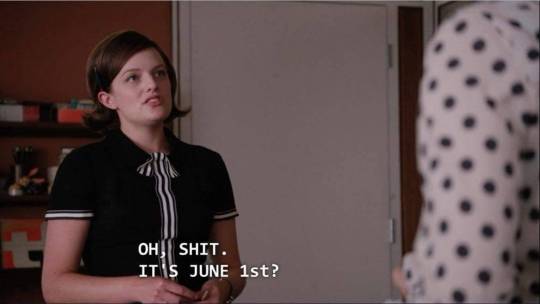
Happy pride/Don Draper’s fake birthday ❤️ Below the cut, I’ve listed info on my favorite Mad Men related books and a couple I haven’t read yet but I’m really looking forward to. Let me know if you check any of these out, or if you have any other recommendations! ❤️
Mad Men Carousel: The Complete Critical Companion by Matt Zoller Seitz
“Mad Men Carousel is an episode-by-episode guide to all seven seasons of AMC's Mad Men. This book collects TV and movie critic Matt Zoller Seitz’s celebrated Mad Men recaps—as featured on New York magazine's Vulture blog—for the first time, including never-before-published essays on the show’s first three seasons. Seitz’s writing digs deep into the show’s themes, performances, and filmmaking, examining complex and sometimes confounding aspects of the series. The complete series—all seven seasons and ninety-two episodes—is covered.
Each episode review also includes brief explanations of locations, events, consumer products, and scientific advancements that are important to the characters, such as P.J. Clarke’s restaurant and the old Penn Station; the inventions of the birth control pill, the Xerox machine, and the Apollo Lunar Module; the release of the Beatles’ Revolver and the Beach Boys’ Pet Sounds; and all the wars, protests, assassinations, and murders that cast a bloody pall over a chaotic decade.
Mad Men Carousel is named after an iconic moment from the show’s first-season finale, “The Wheel,” wherein Don delivers an unforgettable pitch for a new slide projector that’s centered on the idea of nostalgia: “the pain from an old wound.” This book will soothe the most ardent Mad Men fan’s nostalgia for the show. New viewers, who will want to binge-watch their way through one of the most popular TV shows in recent memory, will discover a spoiler-friendly companion to one of the most multilayered and mercurial TV shows of all time.”
A classic episode-by-episode look at the series from reviewer Matt Zoller Seitz.
The Legacy of Mad Men — Cultural History, Intermediality and American Television (Edited by Karen McNally, Jane Marcellus, Teresa Forde, and Kirsty Fairclough)
“For seven seasons, viewers worldwide watched as ad man Don Draper moved from adultery to self-discovery, secretary Peggy Olson became a take-no-prisoners businesswoman, object-of-the-gaze Joan Holloway developed a feminist consciousness, executive Roger Sterling tripped on LSD, and smarmy Pete Campbell became a surprisingly nice guy. Mad Men defined a pivotal moment for television, earning an enduring place in the medium’s history.
This edited collection examines the enduringly popular television series as Mad Men still captivates audiences and scholars in its nuanced depiction of a complex decade. This is the first book to offer an analysis of Mad Men in its entirety, exploring the cyclical and episodic structure of the long form series and investigating issues of representation, power and social change. The collection establishes the show’s legacy in televisual terms, and brings it up to date through an examination of its cultural importance in the Trump era. Aimed at scholars and interested general readers, the book illustrates the ways in which Mad Men has become a cultural marker for reflecting upon contemporary television and politics.”
This is a really beautiful collection. It was published in 2019. It’s rather expensive. (I found a used copy for much cheaper.) If you can afford it, I really, really recommend buying it. There is a pdf floating around if you know where to look though. But like I said, it’s really amazing work and the women who curated it deserve high praise and compensation.
A few favorite essays of mine include “Don Draper and the Enduring Appeal of Antonioni’s La Notte” by Emily Hoffman, “Mad Men’s Mid-Century Modern Times” by Zak Roman, “Mad Men and the Staging of Literature via Ken Cosgrove and His Problems” by Aaron Shapiro, and “What Jungian Psychology Can Tell Us About Don Draper’s Unexpected Embrace of Leonard in Mad Men’s Finale” by Marisa Carroll.
Mad Men and Philosophy: Nothing Is as It Seems (Edited by William Irwin, James B. South, and Rod Carveth)
“With its swirling cigarette smoke, martini lunches, skinny ties, and tight pencil skirts, Mad Men is unquestionably one of the most stylish, sexy, and irresistible shows on television. But the series becomes even more absorbing once you dig deeper into its portrayal of the changing social and political mores of 1960s America and explore the philosophical complexities of its key characters and themes. From Socrates, Plato, and Aristotle to John Kenneth Galbraith, Milton Friedman, and Ayn Rand, Mad Men and Philosophy brings the thinking of some of history's most powerful minds to bear on the world of Don Draper and the Sterling Cooper ad agency. You'll gain insights into a host of compelling Mad Men questions and issues, including happiness, freedom, authenticity, feminism, Don Draper's identity, and more.”
This collection was published just a month before the start of season 4, so it only concerns the first three seasons of the show. As such, it includes some assumptions that are proven false and a few strange misreadings that I’m sure would’ve been cleared up had they had the rest of the show at their disposal. But there are some great philosophical insights and analysis.
I haven’t yet read the whole collection, but my favorite essay of what I’ve read so far was “Pete, Peggy, Don, and the Dialectic of Remembering and Forgetting” by John Fritz.
The Fashion File: Advice, Tips, and Inspiration from the Costume Designer of Mad Men (by costume designer Janie Bryant)
From Joanie's Marilyn Monroe-esque pencil skirts to Betty's classic Grace Kelly cupcake dresses, the clothes worn by the characters of the phenomenal Mad Men have captivated fans everywhere. Now, women are trading in their khakis for couture and their pumas for pumps. Finally, it's hip to dress well again. Emmy-Award winning costume designer Janie Bryant offers readers a peek into the dressing room of Mad Men, revealing the design process behind the various characters' looks and showing every woman how to find her own leading lady style--whether it's vintage, modern, or bohemian. Bryant's book will peek into the dressing room of Mad Men and reveal the design process behind the various characters' looks. But it will also help women learn how fashion can help convey their personality. She will help them cultivate their style, including all the details that make a big difference. Bryant offers advice to ensure that a woman's clothes convey her personality. She covers everything from where to find incredible vintage clothing and accessories to how to pair those authentic pieces with modern shoes and jeans. Readers will learn how to find their perfect bra size, use color to convey a mood, and invest in the ten essentials every woman should own. And just so the ladies don't leave their men behind, there's even a section on making them look a little more Don Draper-dashing.
I recently ordered a used copy of this book and haven’t yet received it, but I’m very much looking forward to it. Like Mad Men and Philosophy listed above, it was published between season 3 and 4, so unfortunately does not cover the whole show. It sounds like it might just cover the women’s costume design, though I’m not sure. Janie Bryant is such a meticulous, genius costume designer that I can’t wait to read it. Relatedly, you should follow her incredible costume design instagram where she posts lots of her work from Mad Men and other shows with fascinating insight into her process.
The Universe is Indifferent: Theology, Philosophy, and Mad Men (Edited by Ann W. Duncan and Jacob L. Goodson)
Centered on the lives of the employees at a Manhattan advertising firm, the television series Mad Men touches on the advertising world's unique interests in consumerist culture, materialistic desire, and the role of deception in Western capitalism. While this essay collection has a decidedly socio-historical focus, the authors use this as the starting point for philosophical, religious, and theological reflection, showing how Mad Men reveals deep truths concerning the social trends of the 1960s and deserves a significant amount of scholarly consideration. Going beyond mere reflection, the authors make deeper inquiries into what these trends say about American cultural habits, the business world within Western capitalism, and the rapid social changes that occurred during this period. From the staid and conventional early seasons to the war, assassinations, riots, and counterculture of later seasons, The Universe is Indifferent shows how social change underpins the interpersonal dramas of the characters in Mad Men.
I only just found out about this collection, but I’m very interested in finding a copy. This was published in 2016. You can see the table of contents here. EDIT: This book is available to read on Scribd. They offer a 30 day free trial.
62 notes
·
View notes
Text
Foundation: Why Isaac Asimov’s Estate Approved Modernizing the Sci-Fi Classic
https://ift.tt/3EKbwIq
This article contains no spoilers for Foundation.
We live in an era when classic works of literature that were once thought to be “unfilmable” — particularly in the realms of sci-fi and fantasy — are now actually coming to the screen. Chief among those, and certainly a crown jewel in the annals of science fiction, is Foundation, an epic series of stories and novels by legendary writer Isaac Asimov that spans thousands of years of future galactic history.
Premiering on Apple TV+ with a 10-episode first season, Foundation begins with the story of Hari Seldon (played by Jared Harris), a mathematician who develops a science called psychohistory, with which he can predict large-scale patterns in history and human behavior. Not surprisingly, Seldon’s prediction that the vast Galactic Empire will collapse into a 30,000-year period of barbarism doesn’t sit well with the Cleons, clones of the original emperor, Cleon 1, who have ruled the galaxy for more than 400 years.
Seldon’s plan is to establish the Foundation, a repository of knowledge that can help cut the coming dark ages down to 1,000 years. The Cleons allow him to proceed, but banish him and his followers to a distant planet called Terminus where they will set up the Foundation. Key to Seldon’s plan are a brilliant young woman named Gaal Dornick (Lou Llobel), his adopted son Raych (Alfred Enoch) and, years later, Salvor Hardin (Leah Harvey), the warden and protector of the colony on Terminus.
Series creator/showrunner David S. Goyer — known to fans for writing the original Blade trilogy, co-writing the screenplays or stories for the Dark Knight trilogy and Man of Steel, creating Da Vinci’s Demons for TV and much more — tells Den of Geek that he had been approached in the past about adapting Foundation as a feature film, but finally jumped at the opportunity to develop it in the present era of long-form streaming. But that doesn’t mean Foundation wasn’t difficult to adapt anyway.
“The original novel or series of short stories was written in the late ‘40s, early ‘50s,” he says. “So the key was identifying the core themes and figuring out, okay, that was what Asimov was writing about in a post-World War II environment. What’s the world like today and how can we apply what’s happening today to the metaphors of Foundation now?”
Other roadblocks to adapting Foundation in the past (which has defeated filmmakers such as Roland Emmerich and Jonathan Nolan, who were developing it for Columbia Pictures and HBO respectively at different points) were the vast leaps in time that the books make as well as their generally cerebral, complex nature. But Goyer had other concerns.
“I thought the harder aspect was making it emotional,” he explains. “The books aren’t known, per se, for being emotional, but with television, people tune in for emotion and characters. So I had to figure out ways of taking Asimov’s themes and embodying them into characters that could express those themes, through love, through their relationships with their parents and children, and so forth.”
One solution to that — and to updating Foundation for audiences in the 21st century — was to make alterations to a number of the major characters, like Salvor, Gaal and the Cleons’ android right hand person Eto Demerzel (Laura Birn), almost all of whom are male in Asimov’s books. But Goyer says he first wanted to make sure his proposed changes met with the approval of the late Asimov’s daughter Robyn and the Asimov literary estate.
Read more
Sponsored
How Foundation Brings the Asimov Novels to Life on Apple TV+
By Michael Ahr
TV
Is Foundation Apple’s Answer to Star Wars?
By Michael Ahr
“The first question that I posed to the Asimov estate was, given that this was written in a post-World War II environment, where there were virtually no speaking female characters in the first book, where very few members of the science fiction community or readers were women, was, ‘We’re going to be doing this for an audience of today and I want the characters in the show to reflect our audience. How do you feel about gender swapping some of the characters?’” he recalls. “Robyn Asimov and the estate completely embraced it. They said that Asimov himself would have embraced that and they were absolutely comfortable with that.”
Goyer also made other, extensive changes to the narrative, such as creating the Cleons (who are played at various ages by Lee Pace, Terrence Mann and Cassian Bilton) and developing storylines that would add the kind of action, intrigue and space opera necessary to keep audiences involved for 10 hours. Goyer says that every step of the way the Asimov estate was on board.
“Look, I grew up on these books, I revered the books,” says Goyer, whose introduction to Foundation and sci-fi came at a young age through his estranged father. “Like a lot of people, Asimov meant a lot to me. A lot of people have a very personal relationship to the original Foundation trilogy — it’s kind of this hallowed piece of work. It was important to me that Robyn and the estate felt like we were doing Asimov’s work justice and that we understood what the themes were about.”
He adds that the estate and Robyn Asimov were “very happy” after reading the first two scripts and seeing the first two episodes: “We felt that we had embraced everything that was important about Foundation and changed the things that, they felt as well, had to be updated for the time.”
The irony of this, even some 60 years after the first Foundation novel was published, is that Goyer sees the overall story, subject matter and themes as more relevant and prescient than ever.
Apple TV+
“I started on this project three years ago,” he says. “Certainly climate change was something that people were talking about, but it hadn’t reached this critical juncture where we’re at now. We weren’t involved in a global pandemic and we weren’t involved in this crazy factionalism and this rise of nationalism that we’re seeing.”
Goyer says that it took him several readings over the years for the books to finally grab hold of him, and that he also passed on adapting it for the big screen twice before. So what made this the right time? “Now that I’m a father, I find myself thinking a lot more about what the world of tomorrow will be like, what the legacy that we leave our children and grandchildren will be,” he responds.
cnx.cmd.push(function() { cnx({ playerId: "106e33c0-3911-473c-b599-b1426db57530", }).render("0270c398a82f44f49c23c16122516796"); });
“That’s a lot more important to me now than it was before I was a father,” Goyer continues. “A lot of those themes carry through in the books, but also in our show. It’s kind of about, what are you willing to sacrifice now, so that future generations, our children and grandchildren, will be able to live in a world that’s as amazing as the world we live today? What is today willing to give up for tomorrow?”
The first two episodes of Foundation premiere Friday (September 24) on Apple TV+, with future episodes debuting weekly.
The post Foundation: Why Isaac Asimov’s Estate Approved Modernizing the Sci-Fi Classic appeared first on Den of Geek.
from Den of Geek https://ift.tt/3kB5zW4
4 notes
·
View notes
Text
Brent’s Top 10 Movies of 2019

Scorsese is probably my favorite living filmmaker, but I’ll be honest, when I heard that Scorsese was making this movie, and *how* he was making it (heavily digital de-aged actors) I was a bit skeptical. De Niro and Pacino haven’t been turning in interesting performances in quite awhile, and Pesci came out of a decades-long retirement for the movie as well. On top of that, the first trailer released did little for me. All that to say I was an idiot to doubt the master.
Scorsese returns to the crime genre that he re-invented many times over the years, this time with the eyes of a man in his 70’s, looking back on his life and career. The movie is very long, but in my opinion, it needs the length. The viewer needs to *feel* the totality of a life, and as is his intent with The Irishman, the *consequences* of this specific life. The final hour or so of this movie feels like a culmination of Scorsese’s career in many ways. The energy and entertainment of a crime/mob epic, with the fatalism and philosophical leanings of a movie like ‘Silence’. It’s a 3.5 hour movie that I’ve already rewatched, and actively want to again, so that alone ought to speak volumes.

Harmony Korine made one of my favorite movies of the 2010’s, the neon-soaked and often misunderstood ‘Spring Breakers’, so I was already in the bag for whatever he did next. When I heard it was a freewheeling stoner comedy where Matthew Mcconaughey plays a guy named ‘Moondog’ costarring Snoop Dogg, I reserved its location on my top 10 list.
This movie doesn’t have the empty heart at its core that defines Spring Breakers, opting instead for a character study about a ‘Florida man’ poet after his life pretty much falls apart. It’s basically plotless, stumbling from one insane, borderline hallucinatory sequence to the next, but I just loved living in the world of this movie. Beach Bum almost feels like a deliriously fun VR simulation of hanging out with Matt McConaughey and his weirdo friends down in the Florida keys. This is one that probably won’t pop up on many top 10 lists but I really adore, and will surely rewatch it a dozen times in the years to come.

Let the record show, I’ve been a huge fan of Bong Joon-ho since I first saw his monster movie/family drama ‘The Host’. Some time later, he went on to make ‘Snowpiercer’, one of my favorite movies of the last decade. All that to say, I think Parasite is probably his best movie, and a true masterwork of thriller direction. It also has his usual brand of social commentary and a script filled with darkness and humor, following a South Korean tendency to juggle multiple tones throughout, sometimes all in one moment or scene.
Parasite also follows a big 2019 trend of commenting on class and social dynamics between the rich and the poor. I think that’s part of why it’s done incredibly well at the box office (especially for a Korean language film), the fact that people can relate in a huge way, regardless of which country your from. Parasite is one of the most entertaining movie viewing experiences I’ve had this year and I’d recommend everyone check it out.
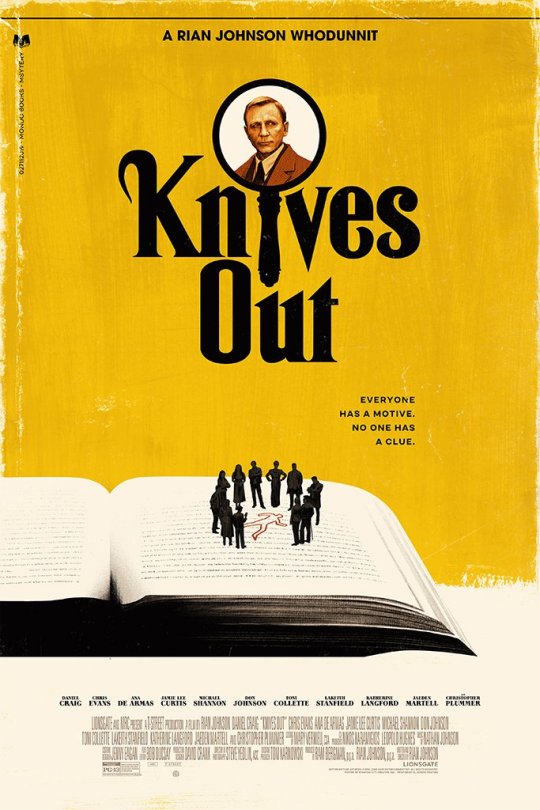
If you were to ask me what the funnest movie-going experience I had in 2019 was, I’d have to pick Rian Johnson’s ‘Knives Out’. Hot off making one of the best Star Wars movies ever made (don’t @ me) Johnson decided to make a passion project in the vein of classic Agatha Christie style murder mysteries, and the results are a total blast. Filled with clever twists and turns, weaponizing the structure of murder-mysteries against the audiences expectations, it stays one step ahead of you the entire time.
Aside from the clever mystery of it all, it’s the actors performances and chemistry that really sell this thing. Jamie Lee Curtis and Toni Collette are expectedly great per usual, and Daniel Craig is having the time of his life as Mississippi private-eye Benoit Blanc, but the heart of the movie is relative newcomer Ana de Armas. She brings an emotional weight and anchor to the movie that always keeps you emotionally invested amidst the terrible, money hungry backstabbing by the other heightened characters. I hope everyone sees this movie and Johnson is able to give us another Benoit Blanc adventure somewhere down the line, I’ll be there opening day.
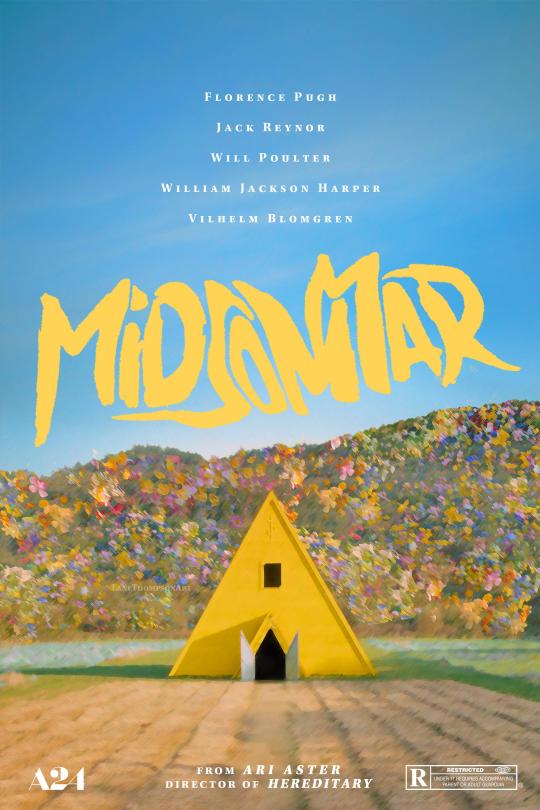
Nobody makes an upbeat, feel-good movie like Ari Aster does! After last years light and breezy ‘Hereditary’ (which I liked a lot but didn’t totally love) he’s back with a completely riveting and emotionally draining (not to mention horrific) masterpiece. What I connected to most in Midsommar is the journey of Dani, played incredibly by Florence Pugh. The way the film portrays the relationship between her and her dog shit boyfriend played by the (usually) charming Jack Reynor keeps you invested in every twist, perfectly paced out over the movies admittedly long runtime.
I won’t get into spoiler territory, but where this movie goes in the end is what makes this a fully 5-star movie for me. After putting you through hell, like Aster loves to do with bells on, Midsommar ends in a euphoric, psychedelic orgy of music and violence that I couldn’t help but laugh out loud. Midsommar rules so hard and I can’t wait for whatever twisted thing Aster cooks up next.
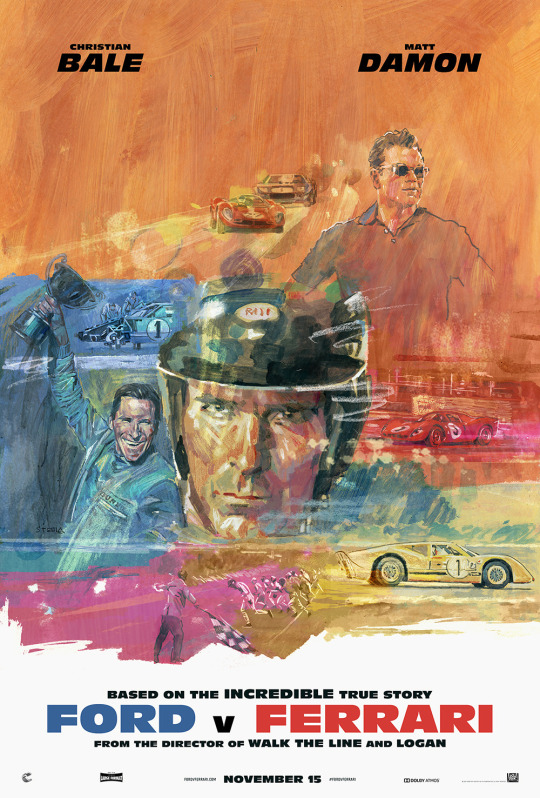
One of my increasingly favorite brands of movies is a finely crafted, primo slice of dad-movie cinema, and James Mangold has made one with Ford v Ferrari. The story chronicles the partnership of ex-racer and designer Carroll Shelby and racer Ken Miles as they work to make a Ford that can compete in the 24 hour race of Le Mans. Bale and Damon are a blast to watch bounce off each other and the race sequences are pretty damn thrilling, combining (what I expect is) a solid amount of great VFX with practical racing to great effect.
I also didn’t expect it to have as much to say about the struggle to create something special by passionate people and not committees while also inside the very machine that churns out products on an assembly line. Just a random note, this original movie was just put out by 20th Century Fox, now owned by Disney but that’s completely unrelated and I’m not sure why I’d even bring that up??? Anyway, I love this movie and dads, moms and everybody else should check it out.
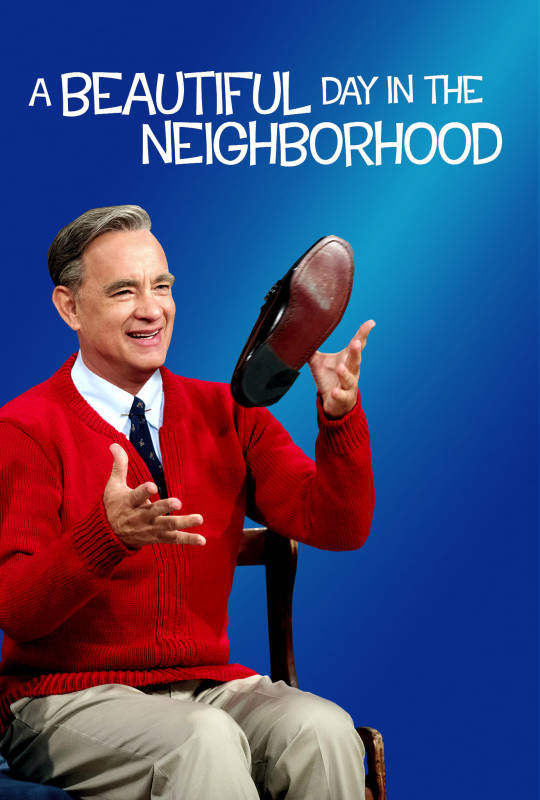
If you saw my list last year, then it must appear like I’m some diehard Mr. Rogers fan. I don’t really have many memories watching his show as a child, but what the documentary ‘Won’t You be my Neighbor’ and this film by Marielle Heller have in common is a shared fascination of his immense empathy and character. It’s only right that America’s dad Tom Hanks should play him, and I was surprised at the end that I was able to get over his stardom and accept him as Rogers. He’s not doing a direct impersonation, and I think it’s all the better for it, instead opting for matching his soft tone and laid back movements.
On a pure emotional level, this movie was a freight train. It didn’t help that the movie covers a lot of father stuff, from losing your own to becoming one yourself (2 big boxes on the Brent bingo card). Heller’s direction is clever in its weaponizing of meta/post-modern techniques, such as one incredible fourth wall break in a diner scene. It literally breaks down the barrier between Mr. Rogers, we the audience, and the films intent to make us feel something.
I cry a lot at movies, that much is well known, but it’s rare that a movie makes me weep, and this one did. Even thinking about scenes right now, days later, my eyes are welling up with tears thinking about the messages of the movie. Mr. Rogers and his lessons of empathy and emotional understanding have rarely been as vital and important as they are right now in our world.
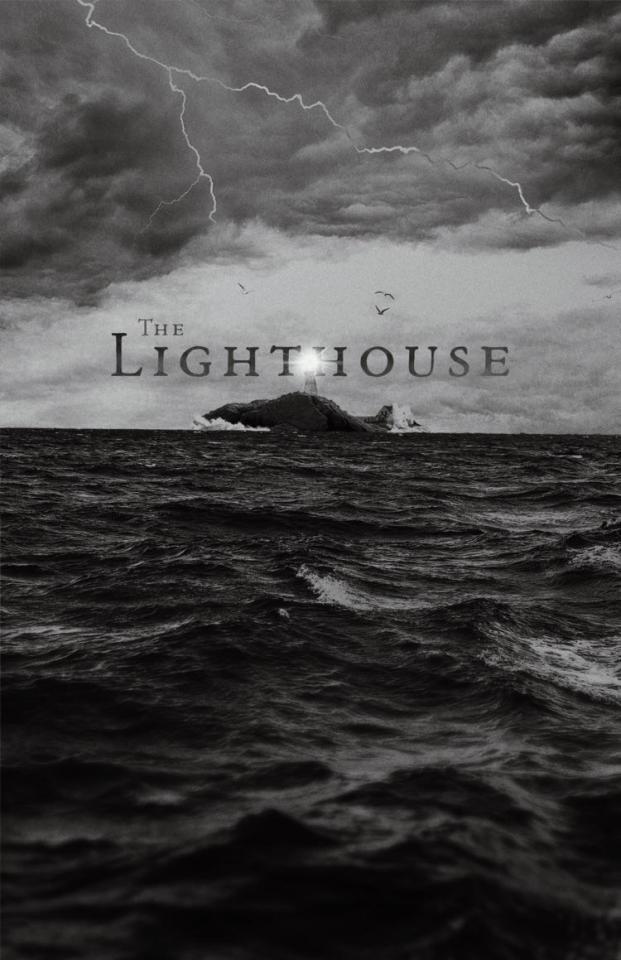
Robert Eggers first film ‘The Witch’ from 2015 is one of my favorite movies of this decade, possibly of all time, so my hype for his black and white, period piece two-hander ‘The Lighthouse’ was through the roof. Even with sky-high expectations, it still blew me away. With dialogue reminiscent of The Witch in its specific authenticity to its era, to the two lead actors giving all-time great performances, It was one of the most entertaining film viewing experiences I had this year.
There’s something about both of Egger’s movies that I really keyed into watching this one: his fascination with shame and the liberation from it. Where Witch was from the female perspective, Lighthouse literally has two farting, drunk men in a giant phallic symbol fighting for dominance. It’s less a horror film than his first, but still utterly engrossing, demented and specific to his singular vision. I can’t wait to see 20 more movies from this guy.

This is another big movie of 2019, like The Irishman, where you can see the director looking inward, at what his films mean and represent. It initially caught me so off guard that I really didn’t know how to feel about it, but after seeing it again, it’s one of my favorites of the year, and probably Tarantino’s filmography overall. More akin to something like Boogie Nights or Dazed and Confused, letting us live with and follow a small group of characters, it mostly doesn’t feel like a Tarantino movie (until the inevitable and shocking explosion of violence in the third act, of course).
‘Hollywood’ is the most sincere and loving movie Tarantino has made, interested in giving us a send off to an era of Hollywood and artists that have been lost or forgotten (Some more tragically than others). In the end, the movie functions similarly to ‘Inglorious Basterds’ in it’s rewriting of history to give us catharsis. “If only things could have worked out this way.” Luckily in movies, removed from the restrictions of reality, they can. And once upon a time in Hollywood, they did.
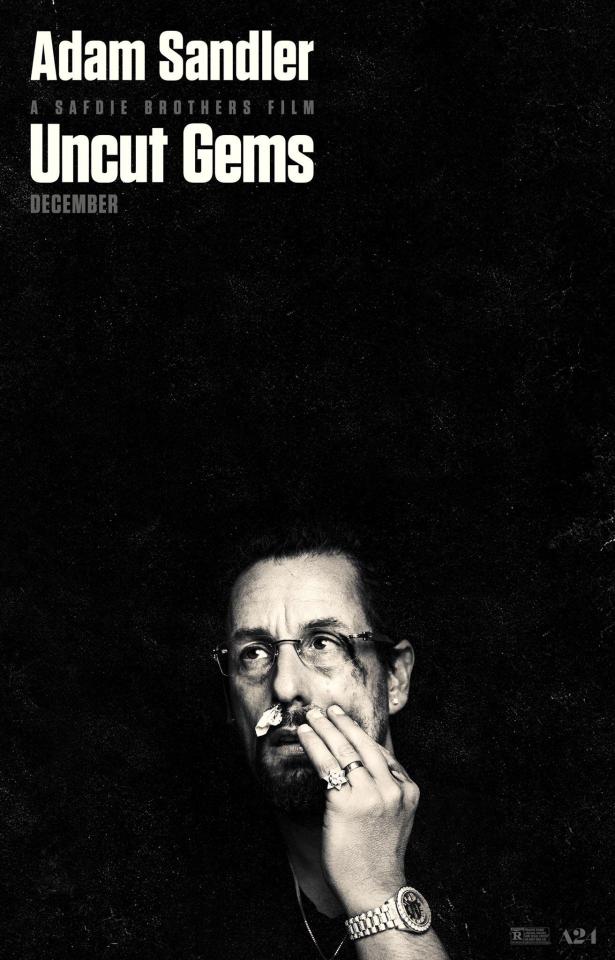
Uncut Gems probably tripled my blood pressure by the time the credits rolled. A slice-of-life story about a gambler/dealer in New York’s diamond district, the movie follows Howard Ratner, played by Adam Sandler in easily the best performance of his career. Ratner is basically addicted to living at the edge of a cliff, being chased by violent debt collectors, juggling a home life and a relationship with an employee, and fully relying on risky sports bets to stay afloat. It makes for a consistently tense and unique viewing experience, expertly directed by the Safdie brothers.
Something that might not work for everyone but that I personally loved, is the chaotic way in which the movie is shot. What feels like loosely directed scenes, with characters talking over each other and multiple conversations happening at once, adds an authenticity and reality lacking from most other movies. It’s more adjacent to Linklater (thanks to Adam for the comparison) or Scorsese’s earlier films (also fitting, that he’s a producer on this). Following Howard Ratner as his life descends into chaotic hell was one of the best times I’ve had watching a movie this year.
HONORABLE MENTIONS
AVENGERS ENDGAME
DOLEMITE IS MY NAME
BOOKSMART
JOHN WICK CHAPTER 3
THE FAREWELL
AD ASTRA
3 notes
·
View notes
Text
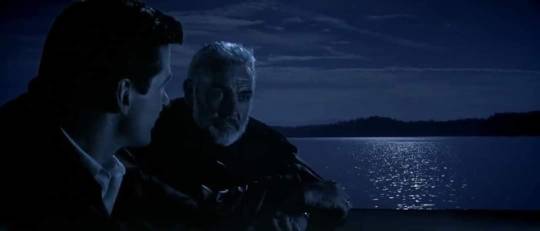
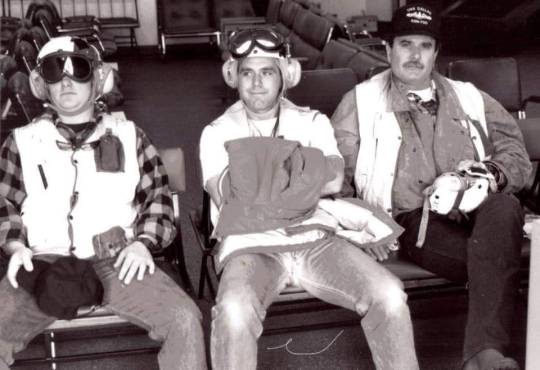
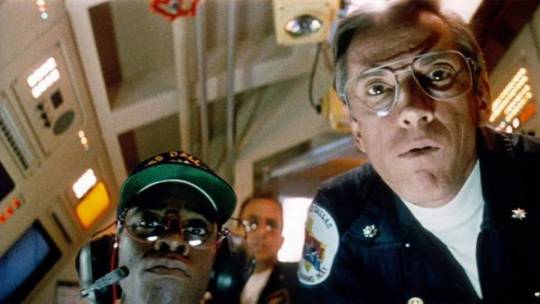
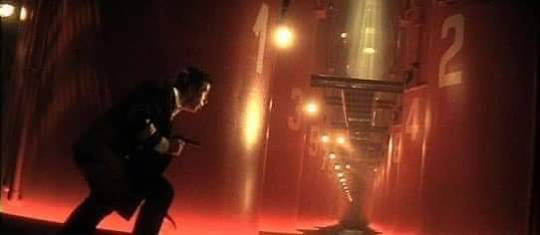
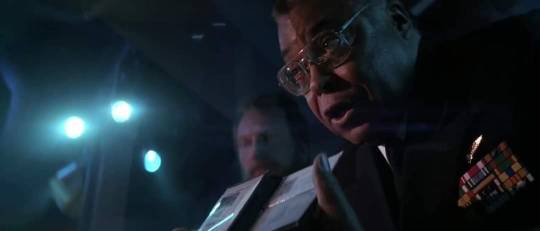
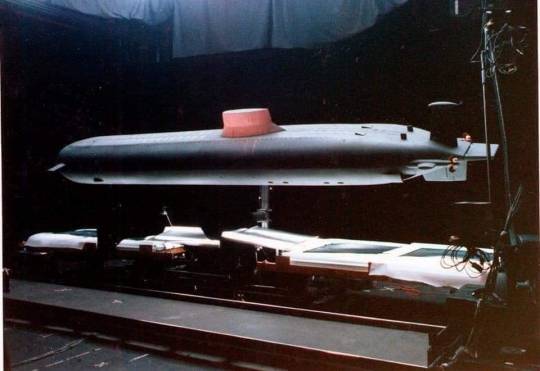


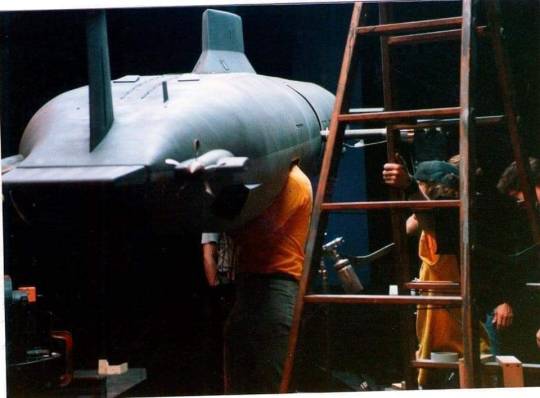

On this date in 1990 “The Hunt For Red October” was released!
Capt. Borodin: “The crew know about the saboteur. They are afraid.”
Marko Ramius: “Well, that could be useful when the time comes.”
Director:John McTiernan
1st AD:Jerry Ballew
Cinematographer:Jan de Bont
Camera operator:Roger Gebhard
1st AC:Cal Roberts
Production Designer:Terence Marsh
Gaffer:Ed Ayer
Key grip:Larry J. Aube
Dolly grip: Michael J. Coo
This is one of my favorite movies so today we’re going on a deep Dive! Dive! Dive! on how this group of dedicated filmmakers brought this movie to life.
The producers originally wanted Kevin Costner for the lead, but Costner had other ideas.
As producer Mace Neufeld explained in a behind-the-scenes DVD feature, "I'd gotten quite friendly with Kevin Costner, and I went to Kevin about playing Jack Ryan. But Kevin was up to his neck, and very enthusiastic, about doing this ... this buffalo movie. And I said, 'You'd rather do a buffalo movie?'".
This was Alec Baldwin’s first big budget starring role throwing himself face first into the role spending time with C.I.A agents and spending the night 600’ underwater in a submarine. He also recommended he personally do the helicopter drop into the ocean. Baldwin accepted the role of Jack Ryan because Harrison Ford turned it down. Cast member Sam Neill also benefited from Ford's refusal three years later by being cast in the lead role of Jurassic Park (1993). Interestingly, Baldwin asked for a big pay increase for the sequel, to which the producers allegedly replied, "For that price, we could get Harrison Ford." Baldwin held his ground and the studio agreed to the fee, but for Ford instead of Baldwin for “clear and present danger”
Sean Connery was a last-minute replacement. The film had been in production for two weeks when word came that Klaus Maria Brandauer (Out of Africa), the Austrian actor who'd been signed to play the rogue Soviet sub commander Marko Ramius, couldn't do it after all because of a prior commitment. Connery took the part instead, needing only one day for rehearsal. Coincidentally, he and Brandauer had acted together in 1983's “Never Say Never Again” and would reunite again for 1990's “The Russia House”, which was shot shortly after The Hunt for Red October.
Mancuso: The hard part about playing chicken is knowin' when to flinch.
"I had reservations about it," Connery told an Associated Press reporter upon the film's release. "I thought this kind of Cold War intrigue might be dated because of recent events(the fall of the U.S.S.R). It turned out that the studio had failed to fax the first page of the script, which explained that it took place before Gorbachev." This is probably why no one ever uses fax machines anymore. After being faxed the script, Sir Sean Connery initially turned the role down on the basis of the plot being unrealistic for the post-Cold War era. Whoever sent the fax neglected to include the foreword, explaining the movie as historical. Once he received the foreword, Connery accepted the role.
After consulting with the hair department behind director John McTiernan's back, Sir Sean Connery arrived on-set for his first day of principal photography with his hairpiece incorporating a ponytail. Several years later, once Connery's potential influence had greatly waned, McTiernan stated in an interview with Sight & Sound Magazine that he was "f---ing livid" with Connery, and that the Scottish actor tried to use his considerable heft with the studio, going over the director's head to pass the alteration with producers. It seemed as though Connery was to get his way until midway through the second day's shooting, when director of photography Jan De Bont started laughing while reviewing the dailies, remarking to Connery that his ponytail looked like "a limp, swinging d--k." This soon became a meme among the crew, and by the end of the second day, Connery was so upset at the mockery, he relented, having the hair department remove the alteration and forcing the re-shoot of a key scene. McTiernan joked that the reported cost of the hairpiece, approximately $20,000, was mainly down to the cost of those subsequent re-shoots.
Jeffrey Pelt: “Listen, I'm a politician, which means I'm a cheat and a liar, and when I'm not kissing babies, I'm stealing their lollipops, but it also means that I keep my options open.”
Screenwriter Larry Ferguson played the role of C.O.B. [Chief (Petty Officer) of the Boat] on the U.S.S. Dallas. He didn’t know he had been cast till he saw his name on the cast list and quickly hired an acting coach having not acted in over 16 years, he quickly started rewrites giving his character more screen time.
The film got an uncredited rewrite—including all of the Russian dialogue—from veteran filmmaker John Milius. The writer of “Apocalypse Now”, and director of “Conan the Barbarian”, and “Red Dawn”—who had directed Connery in 1975's “The Wind and the Lion”—told an interviewer in 2003 that the rumors of his involvement with The Hunt for Red October were true. He said he added speeches for Connery's character ("Make it about me," the actor supposedly told him), and that he "wrote all of the Russian stuff—everything that's Russian in that movie."
In one of the most clever ways I’ve seen a movie ditch the subtitles, this film begins with the actors speaking Russian with English subtitles. As the camera slowly dollies to the mouth of actor Peter Firth he casually switches in mid-sentence from Russian to English on the word "Armageddon", which is the same spoken word in both languages. After that point, the Soviets' dialogue is communicated in English.
During filming, several of the actors portraying U.S.S. Dallas crewmen took a cruise off the coast of San Diego on the USS Salt Lake City (SSN-716) a real Los Angeles-class submarine. To train for his role as the Dallas' commander, Scott Glenn. The real commander Thomas Fargo of the Salt Lake City ordered his crew to treat Glenn as equal rank, first giving reports to him, then give the same report to Glenn. Glenn based his performance of Mancuso on Commander Fargo, giving orders in a calm even voice, even in tense situations, saying "whatever good happened in the performance, basically I owe to now Admiral Fargo, thank you sir."
Made before sophisticated CGI became the norm in filmmaking, the film's opening sequence featured a long pull-out reveal of the immense titular Typhoon-class sub. It included a nearly full-scale, above-the-water-line mockup of the sub, constructed from two barges welded together. Since they didn’t have permission to go out to open ocean they were forced to shoot in Long Beach harbor to create the wake of the open ocean they had boats circling the barge to create waves.
Production designer Terence Marsh and Cinematographer Jan de Bont didn’t want to confuse the audience so they gave each country's submarine its own background color: Soviet submarines, such as Red October and V.K. Konovalov, had interiors in black with chrome trim. American ships, such as Dallas and Enterprise, had grey interiors. To help the audience quickly grasp which sub's interior they were seeing as the movie jumped from scene to scene and sub to sub, the filmmakers also created a subtle lighting scheme: blue for Red October, green for the Alfa class "V.K. Konovalov", and red for Dallas.
During filming in 1989, the U.S.S. Houston, which doubled for the U.S.S. Dallas in the movie, snagged the tow cable between the commercial tugboat Barcona and a barge, sinking the tugboat ten miles off Long Beach, California. One crewman unfortunately drowned, and two more were rescued.
On stage for the sub interiors two 50-square-foot (4.6 m2) platforms housing mock-ups of Red October and Dallas were built, standing on hydraulic gimbals that simulated the sub's movements. Connery recalled, "It was very claustrophobic. There were 62 people in a very confined space, 45 feet above the stage floor. It got very hot on the sets, and I'm also prone to sea sickness. The set would tilt to 45 degrees.
I asked the Dollygrip on the film and crew stories member Micheal Coo about his experience on the and he shared this with us.
“ I’ve got a story for you...
We were shooting in a real submarine and doing a tracking shot down a long corridor. Now about every 15 feet is a bulkhead that you have to step over and make sure you don’t hit your head on the top. We are tracking on a peewee dolly, raised up on track to clear the bulkheads, chasing Sean Connery down the corridor. While chasing Sean, Jan Debont yells cut cut cut, and stands up. There’s no way I could stop on a dime and Jan stood up right before one of the bulkheads. He hit his head so hard he flew over the top of me and I went under him with the dolly. His head sounded like a church bell ringing in the submarine. Since Jan Debont and Sean Connery didn’t get a long so well Sean laughed his ass off at Jan laying there on the floor saying “Fucking Hell Shit Michael, I said cut!!!”
The miniature “underwater” scenes were shot and built by I.L.M and the talented model makers from BOSS films Gregory Jein, John Eaves, Ron Gress and Alan McFarland, they filmed using smoke to simulate underwater with a model sub connected to a 12 cable marionette style frame, giving precise, smooth control for turns the same technique was used for the robot aliens in the film “Batteries not included”. To get the lens to “scrape the paint” of the model to make it feel life sized the crew used mirrors lined up perfectly and the camera lens shoot into the mirror getting the image much closer then it would have been possible for the camera. With Computer generated effects, in their infancy, cgi was used for creating bubbles and other effects such as particulates in the water.
Navy recruiters set up booths in some theater lobbies for people to sign up to join the service, or to at least look into it. The Pentagon hoped that this movie would do for the submarine service what Top Gun (1986) did for Naval aviation.
When the movie was first released on VHS in 1991, the tapes were red.
Capt. Marko Ramius: I'm reminded of the heady days of Sputnik and Yuri Gagarin when the world trembled at the sound of our rockets. They will tremble again at the sound of our silence. The order is engage the silent drive.
If you can help identify any crew members please comment, thanks for reading
Via Diego,IMDb, YouTube,MCGA. Special thanks to Dolly Grip on the film Michael Coo and miniatures paint expert Bruce Hazumi
2 notes
·
View notes
Link
Here’s another one you’re not gonna read...
(...because it’s excruciatingly long, not because it isn’t necessary.)
One of my most faithful followers (unless I’m confusing him with someone else, because what little blowback I get from the other side of the street tends to bleed together these days) checked in about a different post I made for this story, which I entitled (checks notes) ”Geriatric toddler threatens to dismiss a branch of the government during a national emergency unless he gets the toys that he wants”:


First of all, hope you’re doing well in the current situation, and thank you for your thoughtful analysis of the first two words of a joke headline.
The Washington Post article that joke was attached to goes into the president’s threat last week to dismiss Congress under the never-used Article II, Section 3 of the Constitution, with the goal of making recess appointments that bypassed the hearings that have tripped up several high-profile nominees.
Like a lot of things that literally every other POTUS before the current one never attempted, there’s a pretty spirited debate as to what conditions would have to be fulfilled for Trump to successfully pull this maneuver off, assuming it’s not all bluster and no muster. One major condition that would have to exist is that the Senate and the House would have to be in disagreement on adjournment, and according to the National Law Journal, there is no disagreement between the chambers at the moment. The current session officially adjourns on January 3, 2021. So until circumstances prove otherwise, we have to operate under the assumption that he can, in fact, exercise this extraordinary Constitutional power...under a narrow set of conditions which don’t exist right now.
The reason he’s making this threat, and why his supplemental threat to “take it to the courts” is toothless, is that the last man in his current position tried to make a recess appointment between the type of pro forma sessions we’re dealing with now and was shot down by a unanimous Supreme Court decision, one which reaffirmed that Congress is done when Congress says it’s done.
But one justice went a little bit further in his concurring opinion, issuing a warning about any court decision that “transforms the recess-appointment power from a tool carefully designed to fill a narrow and specific need into a weapon to be wielded by future presidents against future Senates.”
“The Recess Appointments Clause therefore is, or rather, should be, an anachronism—’essentially an historic relic, something whose original purpose has disappeared,’” the justice wrote. “The need it was designed to fill no longer exists, and its only remaining use is the ignoble one of enabling the president to circumvent the Senate’s role in the appointment process.”
Antonin Scalia, ladies and gentlemen.
Here’s where things get interesting, though, because the statement that came from Mitch McConnell’s office, at least if you squint hard enough, signals “I feel ya, bro, but focus.”: “The Leader pledged to find ways to confirm nominees considered mission-critical to the COVID-19 pandemic, but under Senate rules will take consent from Leader Schumer.”
Which brings us back to our article up there...
What qualifies as “mission-critical to the COVID-19 pandemic”? There are a few nominees that are cooling their heels at the moment, but for the Voice of America (and yes, now is when we finally get to the linked article), one of them strikes pretty close to home.
U.S. President Donald Trump is threatening to adjourn Congress because lawmakers have not approved his candidates for senior posts in his administration, including his nominee to run the independent agency overseeing the Voice of America.[...]
Documentary filmmaker Michael Pack, whom Trump has selected to run the U.S. Agency for Global Media, is one of 15 key nominees awaiting confirmation by the Senate. Trump cited Pack by name (but erroneously identified the body he would head as USAGM’s predecessor agency, the Broadcasting Board of Governors).
Michael Pack is a self-described conservative documentary filmmaker, one who has done work with Trump’s ex-chief strategist Steve Bannon. And there’s a pretty damn good reason why the confirmation committee pumped the brakes on his nomination (per CNBC).:
The “problematic revelations” that Menendez says he discovered just before Pack’s confirmation hearing in 2019 include “whether Mr. Pack engaged in inappropriate or unlawful activity related to transactions between his business (Manifold Productions) and his non-profit (Public Media Lab)” and “whether Mr. Pack engaged in self-dealing while in a leadership position at the Claremont Institute through the awarding of a contract to Manifold” even though that company doesn’t appear to have any qualifications to act as a vendor to the conservative think tank.
The letter to Meadows also sheds light on another aspect of Pack’s confirmation, which is that the Democratic committee leader has asked Pack to provide documents and answers to a variety of questions that could clear up these issues, only for Trump’s nominee to respond in a “perfunctory and inadequate” way.
“More than seven months have gone by since my initial questions. Mr. Pack has yet to provide the Committee with the requested information or to engage in a good-faith and serious effort to do so,” Menendez said.
So when confronted with his unethical, possibly illegal wrongdoing, Pack stonewalled, the way all this president’s men do. Sounds like a great guy to trust with public funds.
But seriously, why is this “mission critical to the COVID-19 pandemic”?
Back to VOA:
Pack’s nomination has “been stuck in committee for two years, preventing us from managing the Voice of America — very important,” the president said. “And if you heard what’s coming out of the Voice of America, it’s disgusting. The things they say are disgusting toward our country. And Michael Pack would get in and do a great job, but he’s been waiting for two years — can’t get him approved.”
Disgusting, you say? Let’s settle into that accusation for a hot minute.
Here’s the deal about the VOA: It went on the air on February 9, 1942, a little over two months after America found itself pulled into a global conflict of a massive scale with the actual, non-metaphorical Nazi government which had steamrolled over the European continent. That first broadcast came from a small studio in New York City, directed at an aggressor nation which had developed a robust system of delivering misinformation to its enemies.
So how do you combat lies? Double down on honesty.
youtube
“This is a voice speaking from America, a voice from America at war. Our voices are coming to you from New York, across the Atlantic Ocean to London, from where they are relayed to you in Germany. Today, America has been at war for 79 days. Daily at this time, we shall speak to you about America and the war. The news may be good or bad. We shall tell you the truth.“
“The news may be good or bad. We shall tell you the truth.” I’ve never been a journalist, but the first time I read those words I was thunderstruck. In the simplest language possible, there’s the Platonic ideal of what news reporting is supposed to be. It also sets a high bar for how the United States presents itself to the world. We could argue all day on how many American organizations live up to those words, how many American administrations live up to those words, or if any configuration of the American government is equipped to be honest and forthright in every imaginable situation. But that’s the resolution, the goal for all the world to see.
So what is the “disgusting” VOA coverage that President Trump is complaining about? If we look at some recent headlines, we might get a hint.:
US Nowhere Near Ready for Business as Usual, Former CDC Head Says
Fauci: US Economy Won’t Recover Until Coronavirus Controlled
WHO Chief: Worst on Coronavirus Pandemic Yet to Come
WHO Fears US Funding Cuts Will Roll Back Health Gains in Africa
If you actually read these, they’re nothing more than articles recounting expert assessments of the potential consequences of federal actions (or, just as often, inactions) connected to our coronavirus response. Addressing these things in the public square is usually meant to be a corrective, especially when your chief executive pays more attention to the media than his own advisors, and that a broadcast outlet funded by the US government isn’t afraid to publicize criticism of government decisions gives our entire system a much-needed shot of credibility.
But Trump has never been able to take even constructive criticism as anything other than a personal insult, an attitude which he magnifies by using the power of the highest office in the country to scream “FAKE! FAKE! FAKE! FAKE!” at the top of his lungs whenever he sees or hears something that hurts his feelings.
The only conclusion I can draw is that he wants the Voice of America to be more like the Voice of Korea, and the “mission critical” part of this gambit is that the VOA’s editorial independence distracts and confuses him. Do I seriously think the beacon of the Cold War era, the organization whose current director proudly proclaims “We export the First Amendment,” is going to be converted into a shoddy simulation of the old Eastern bloc broadcasters? Of course not. Would I put it past the current chief executive to at least try, destroying the VOA’s credibility to redesign it into yet another monument to himself? Not a shadow of a doubt.
“The news may be good or bad. We shall tell you the truth.” It’s a core element of America’s self-image, and the image we project to friends and foes alike. And the 45th President of the United States thinks that’s disgusting.
Because he doesn’t want the truth. He wants to be soothed and coddled. He wants a cookie and a story before bedtime. You know, like a toddler.
(PS: For the record, the “very clever boy” in this account’s original title was always intended to be Donald Trump, because, as you probably figured out a long time ago, I don’t view him as very clever, nor has he been a boy for quite some time. I changed the official name of the blog to Trump Happens because some people don’t get sarcasm.)
2 notes
·
View notes
Text
Persona (1966) | Directed and Written by Ingmar Bergman
youtube
(preferable trailer over original from Austin Film Society)
Film Intro and Purpose for Page
Heady Times = Heady Films!...and we’re all wearing masks right now, literal and metaphorical. To start off my new page I’m going to begin at the tippy top with Ingmar Bergman’s Persona, the “Mount Everest of Film Analysis”, which has been described as creating even more contradictions when trying to analyze it. It was made in 1965 in Sweden and is commonly in conversation as one of the greatest films of all time. Bergman died at his home where he filmed Persona on July 30, 2007. This was also my first day ever to visit Los Angeles, right before moving here the following month. I remember seeing it on the LA local news while staying at a beach hotel with my Mom. I don’t know how I remember it so clearly but I can see that room now, in my head, and the news anchor looking into the camera. It’s also worth mentioning that Michelangelo Antonioni, the Italian filmmaker, died on the same day. Two giants of cinema. I rewatched Persona late last night and took a copious amount of notes. I first saw this film 7 or 8 years ago and then twice recently. This entry will be more lengthy than future ones because I naturally felt the need to be more specific with this particular film...I wanted to have a fighting chance at semi-understanding it. I will only look something up if absolutely necessary for factual purposes. Although (full disclosure) the “Mount Everest of Film Analysis” title was taken from the first paragraph on the film’s Wikipedia. This was before I decided exhaustive searches about film historians’ perspectives would just be too much for these posts. Instead, I will focus on my unique thoughts and perspective about the film and what I feel is valid.
After filling my head with Persona I went to bed. I then dreamt that I was in a writers’ room with filmmaker Paul Thomas Anderson (who is one of my favorite filmmakers and will turn up on this page soon). We began talking about his film The Master. I remember feeling frustrated in the dream that I couldn’t think of anything clever to say about it in front of him. He told me that films sometimes just fold in together in unexpected ways, almost by luck. This prompted me to finish his sentence by saying that films sometimes generate these unplanned illuminating interpretations that are endless. He agreed with me, which felt good, even though in reality I was speaking for Paul because he was just a character in my dream...or possibly something outside the grasp of my conscious mind spoke for him/me.
So why start with Persona? Why start this page?? Because I am fascinated by the mystery of great films and believe there is transformation and understanding when one attempts to decipher "works of art” like this. Plus, it’s fun for me and a rewarding challenge to complete. Mulholland Drive was my big bang moment (influenced by Persona) and I have been hooked on digging into these type of films ever since. I’m also a filmmaker that has been working on a Short for the past year (which has been grueling) and feel I can improve my own filmmaking abilities by breaking down these masterpieces in my own words. My goal is to attempt not to stray too far from what is objectively being shown while also using my own knowledge of what I think the filmmakers are trying to say...or, even better, DIDN’T know they were trying to say. And I’m sure writing about the metacognitive nature of this particular film will reveal a lot about myself, which is what great cinema inspires.

Enigmatic Opening
The film fades in and we are inside a film projector. Images begin to flash quickly and chaotically. I will mention some below: -A penis. -An animated female character upside down that eventually holds her breasts. -A silent era movie chase scene of a skeleton coming out of a chest, and then dracula chasing a man in his pajamas. He fearfully jumps in bed and throws the covers over himself. Is it just a dream? -A closeup of a sheep being slaughtered, bleeding out. -Screen flashes white to a shot of Jesus’ hand being nailed to the cross, which to me resembles the tarantula that flashed earlier. -Cuts to a quiet forrest, then sharp tops of a metal fence and next a dirty snowpile in front of a building... Why are we being shown this? I believe this opening operates like a dream. Are these images preparing our unconscious for what we see later? It’s impossible to know exactly unless some detailed external commentary is given. I remember reading Roger Ebert saying the sequence was Bergman stating he is creating a new type of cinema, expressing this by starting in the projector and ending in the projector. This never crossed my mind while watching.
-An old woman dead on a table possibly in a morgue, then a man. -A phone rings. The dead women suddenly opens her eyes. -A boy opens his eyes, waking up. He puts on his glasses as the phone continues to ring and opens a book and begins reading. He then looks into the camera at us (a motif for certain moments in the film, especially for Elisabet). -Next, a reverse shot which reveals he is looking at a screen that covers the wall. It’s a striking image as the music crescendoes. The screen reveals what looks to be an unrecognizable woman that keeps blurring and morphing. The boy touches the screen in a way that I interpret as yearning. Then it becomes clear the women’s faces on the screen are the main characters that we will soon meet and spend the film with, Alma and Elisabet. Their faces are blending into one another, but it is still not extremely clear. I had to go back and rewatch this part to verify if it was actually them. “Not extremely clear” is a theme throughout the film. Who is who? What is a dream and what is not? This motif of faces and masks. Insecurities about what to show and what to hide, which I think was my main, simplified takeaway from the movie after the first watch. Predeterminism is also something that keeps popping in my head after watching. Alma cannot hide from Elisabet. Elisabet always seems to know at key moments. The Conscious cannot hide from the Unconscious. The Swiss psychologist Carl Jung was a large inspiration for this film and the term persona is his term in the context aligning with the film.
Then the title page quickly flashes, along with the boy in glasses again, then the two main female characters, all in individual closeups. This film is shot in 4:3 aspect ratio, which is conducive to faces and the two female characters have amazing faces with the help of the naturalistic cinematography of Sven Nykvist. Below is a couple of quotes I found beautiful by Bergman regarding the human face:
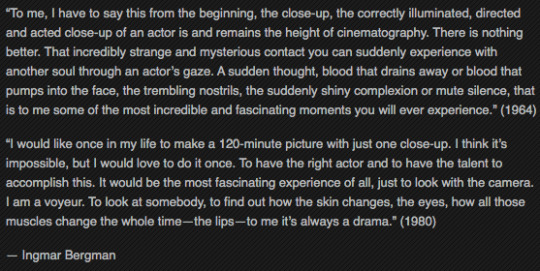
The music is amazing here too at the opening...percussion and xylophone with chaotic crescendos, which seem way ahead of its time.
And is this boy shown, Bergman himself?...putting on his glasses, with childlike curiosity, yearning, awakening to this experience of making this novel film and what it will tell him?

Alma and Elisabet Meet
We are at a hospital. The Doctor informs the Nurse, Alma, that the patient, Elisabet, has stopped speaking. She is an actress that became mute in the middle of a performance on stage playing Electra and has continued not speaking for 3 months. (”Electra Complex” is a Jungian term that is the female version of the Oedipal Complex.) Alma anxiously enters Elisabet’s room and introduces herself saying she’s 25 years old and grew up on a farm in the country. Elisabet looks away. Alma later tells the doctor in the hallway that she can not help her and “may not be up to the task mentally”. In my opinion, Alma’s insecurity with her mental faculties is a huge part of the film, possibly because she’s unaware and/or unwilling to see her full Self. Alma goes back in the room and blurts out that she doesn’t understand films and theatre but has great admiration for artists and is impressed by Elisabet, who then embraces her. Elisabet possibly needed this validation. Alma soon leaves the room after turning on the radio with symphony music. A closeup of Elisabet reveals how deeply she feels this music. Liv Ullmann (actress playing Elisabet) has such deep eyes that are able to convey so much as tears subtly well up. She eventually exhales and turns away from the camera and radio. These moments occur with Elisabet throughout the film where she shows this sensitivity and understanding of something outside of the sphere of what is going on between Alma and herself. For example, soon we see her in the bare hospital room (beautifully and minimally lit) reacting to news coverage of the Vietnam War. The TV shows a monk that has set himself on fire in protest. This backs Elisabet all the way up into the corner of the room, gasping with her hand over her mouth and in closeup it’s evident she feels so much of what’s she’s watching...and I felt it deeply too.

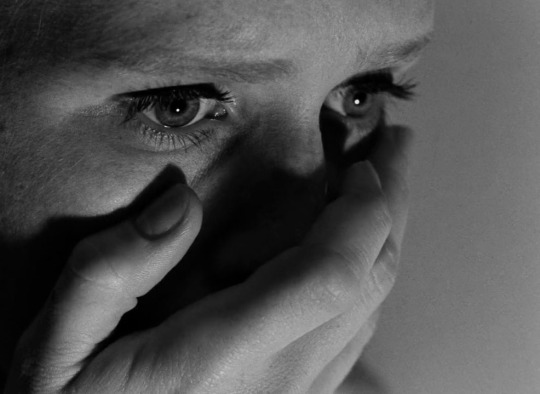
In the scene prior, Alma is shown sitting on her bed in her nightgown (possibly talking to the camera first, then herself) about how she will get married, raise her kids and how everything is “decided” for her, predetermined. Several phrases that she uses during this self-assuring scene: “It is inside of me”, “Already written”, “I don’t even have to think about it.” Which to me, is a stark contrast to who Elisabet is...a mother who has left her family, who does not accept her reality and who wants more. Yet, Alma now is sleepless also, sorting this out aloud, as if coming back into herself because Elisabet has perplexed and disrupted her. Elisabet fascinates her. She admires Elisabet. Elisabet has introduced this mystery into Alma’s life now and is living in her thoughts.
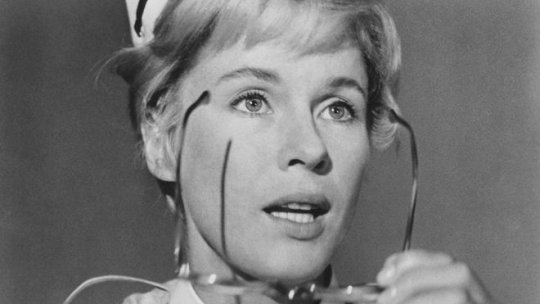
The Doctor Speaks to Elisabet
I’m not sure what others have said about this scene, but in the moment while watching, I found it to be the most revealing, door-opening of the film. I think it is because the Doctor speaks with such clarity and assurance. It is a more literal explanation of what is happening with Elisabet and a lot of the other scenes do not reveal themselves so easily. You have to chew on them a bit. The Doctor is older, integrated, in contrast to the two younger fragmented leads. The Doctor recommends Elisabet and Alma move in to her summer home next to the sea instead of staying at the hospital. She says it will be better for Elisabet there. She then says she understands the chasm inside of Elisabet and also the deep chasm between Elisabet and others. The Doctor continues by saying that this feeling of falseness and lies and the constant hunger to be “unmasked” is causing this paralysis of speech. Elisabet is still, carefully listening. Apparently the Doctor is onto something. The close-up two shot during this scene is also a motif that recurs throughout the film. Sometimes the two shots are not exactly like this but very similar. The Doctor is fully lit. Elisabet is half-lit, in shadow on the side closest to the camera. I wonder if this half-shadow lighting is connected to Jung’s term, shadow. I wouldn’t be surprised if it was a literal, overt expression in the cinematography. The shadow is defined as an unconscious aspect of the personality which the conscious ego does not identify in itself. Jung goes on to say that the shadow is often negative, because it is the least desirable aspects within oneself that has been conveniently ignored or rejected...because it’s uncomfortable to face (no pun intended). This is an accurate description regarding the characters. Alma also displays this rejection of the shadow multiple times that I will point out later. The Doctor then mentions Elisabet should play out this scenario until it is no longer interesting and then she can drop it, like a role. Perhaps the Doctor says this to use a vernacular Elisabet will understand, but also connecting her condition to the mute persona Elisabet has now acquired.
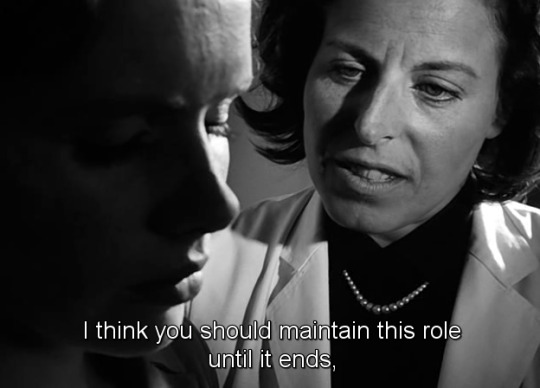
The Summer House
It's amazing how much Bergman packs in to the first 22 minutes!
Alma and Elisabet are now at the summer house alone together, enjoying themselves in this isolated spot near the sea. Alma grew up a farm girl, so is accustomed to this “rural seclusion”. Elisabet’s coldness and indifference has seemed to disappear, moving out of the sterile hospital room to this new setting. The two sit together outside and go through mushrooms they’ve picked, both with similar style hats (light and dark) as they subtly hum a tune in unison. Elisabet then compares her palms with Alma’s. Alma grins and says it’s bad luck to compare hands. The two are now on the rocky beach in their swimsuits. The beach is quite bleak, looks uncomfortable to lounge on and a bit other-worldly. Alma reads a passage aloud from a book she’s reading, meditating on the “anxiety of the earthly condition”, perhaps something she thinks Elisabet will find profound. Elisabet takes this in, is moved and agrees with the existential description. Alma however doesn’t agree, nor seems to fully comprehend what she’s read. In the house now. Alma has several moments where she begins to open up to Elisabet but then second-guesses herself, self-conscious of what the mute “artist” might think. And Elisabet IS hard to read. She seems to me bored and distant at times, then lovingly engaged and listening. Alma now smokes because Elisabet does and both dress similarly in black.
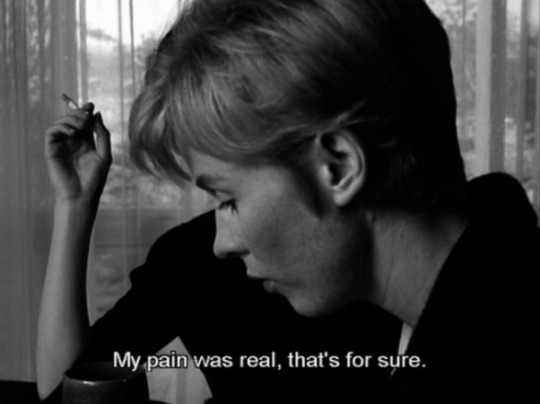
Alma continues to open up even more. A silent companion only leaves room for one talker. Who is the patient now? The camera angle features Alma’s speaking face in the foreground blocking Elisabet’s; one head blending together. It’s as if Alma is discovering things about herself for the first time...about her chosen profession as a nurse and a past relationship. The conversation moves to the bedroom. Both are in their night gowns. Alma tells a long, detailed story about an orgy on a beach involving her friend and two boys that approached them while they sunbathed nude. Elisabet is sitting up in the bed and Alma sits in a chair. Elisabet shows a few signs of pulling away due to Alma’s gregariousness and wears a cool “been there done that” expression, but as the story continues she becomes focused, still, and calculating. If I had to guess, this sexual experience of Alma’s is the most intense event of her life. She had cheated on the man she is now engaged to and is so vulnerable here in her confession. The acting by Bibi Andersson is superb. Alma ended up pregnant and had an abortion. She weeps with guilt. Is Alma’s mask fully off, revealing too much, bare to the bone? What does Elisabet really think about all this? Is she “gaining” from this somehow?
They move to the dining table again in the other room. It’s raining outside. Alma is loose and drunk, in a manner one is after a huge confession. She again announces her inferiority, saying how boring she must be to Elisabet and what use she could possibly be to her. She also says that she should be more like Elisabet and not talk. Alma then points out how they look alike and she could turn into her if she made the effort. Then she says, “You could turn yourself into me just like that. Although your soul would be much too big. It would stick out everywhere!” My favorite lines of the film. Alma then puts her head down on the table as if to sleep. Elisabet then speaks for the only time in the film, telling Alma to go to bed before she falls asleep at the table. Alma looks up blankly, puts her head back down, then pops up again and repeats what Elisabet just said. Was it just a thought or did Elisabet actually speak? Does Alma flirt here with Elisabet when saying good night? It looks like it.
Alma’s Awakening
The bedroom is foggy. Alma gets a glass of water then lies down in bed. Elisabet walks up the hallway into the bedroom, looking at Alma then into the white room around the corner. She then turns back. A horn from a boat blows ominously outside in the night sea. A slight breeze moves a white transparent curtain in the doorway. Alma raises as if summoned, goes to Elisabet and leans her head on her wearily. Then the iconic shot of the the two looking into the camera at us. Elisabet places her hand on Alma’s forehead moves it back over her hair as if this is allowing Alma to “see” now, an awakening...Elisabet being the guide. Is this an opening of the third eye? It may be a stretch, but it crossed my mind. The two actresses are so beautiful here, softly lit from above, and fold into each other afterwards like an integrated yin and yang as picture fades to black. The music reminds me of Hitchcock’s and I’m not sure I like it, but the moment is indeed powerful. Did Alma dream this? Does it matter?

Chaos
Picture fades back in and Elisabet greets us on the rocky beach. She enters frame from below, taking a picture of us with a stills camera. Alma is in the distant background next to the shore. Elisabet walks to her and takes a photo of Alma as she clumsily poses. Alma coldly asks Elisabet if she was in her room last night. Elisabet shakes her head no and shows no sign of lying.
Later in the house, Alma takes the mail to sent be sent off and has to take a drive to do this. In the car, she opens up Elisabet’s letter to the Doctor in curiosity. The first part of the letter is complimentary to the living situation and Alma, but then Elisabet writes, “it’s fun studying her (Alma) and how she cries over past sins.” The letter also mentions Alma’s orgy and the abortion and says how she “complains that her notions of life fail to accord with her actions”. Alma is stunned and gets out of the car. She stands stolidly dressed all in black next to a murky pond looking at her reflection in wide shot.
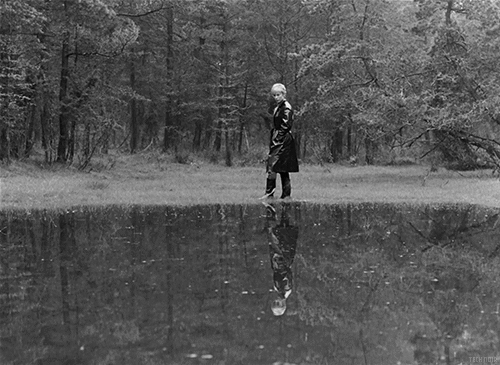
Alma is back at the house now in a black swimsuit with a grave look on her face. This expression was nowhere to be found until this point in the film. Outside she breaks a glass on accident and begins sweeping it up. She notices she missed a large piece, but leaves it after seeing Elisabet coming outside. The camera moves from the piece of glass as Elisabet’s bare feet pass by it, then back up to a watchful Alma. Again, camera fixed on the piece of glass as Elisabet narrowly misses it and tilts back up to a silent Alma. Eventually, Elisabet steps on it, making a painful sound in response. Alma watches from inside the house with a hard scowl behind a transparent curtain. Elisabet stares back with a concerned, furrowed brow as if she knows what Alma did. A violent sound effect comes in along with a literal splitting of the picture, a deep transition within the film and the character of Alma. She has crossed a line.
My first impression of the sound effect is it’s a film spool that is hung up in the machine...like the film has broken (similar to the glass) after Alma committed this act (or non-act). The shot then literally burns up, starting on Alma’s face to a quiet white screen. This effect would have seemed cheesy in almost in other film, but I think it works here. It is simple and clear and connects to the meta, self-reflexive nature of the film.
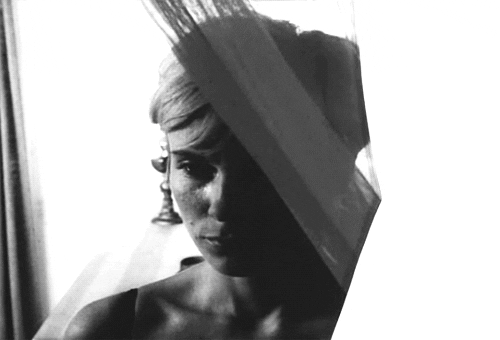
Everything has changed now. Alma's insecurities have caused her to become darkened. Her sought-after approval from Elisabet has been betrayed by the letter to the Doctor. She has lost herself and taken on a new protective persona. Or has she found power (even though misdirected) after her awakening? Pain leading to growth in her cycle? What is for sure now is she is very far from the sweet, unsure nurse we saw at the beginning of the film.
A voice in reverse is heard now (an effect David Lynch must have gleamed for Twin Peaks). We are again shown images similar to the opening of the film... the vampire, the skeleton, a spike going into Jesus’ hand accompanied by a disturbing scream and an extreme closeup on a shifty eyeball that the camera pushes in on... What do the eyes say and can the camera uncover it? Can we see the soul if the camera looks into the eye close enough? Camera fades in to Elisabet walking around the house, picture blurred and in slow motion, which eventually becomes focused and at normal speed. She exits the house and goes outside looking for Alma. Eventually she finds her and touches Alma’s cheek with sweet, subtle affection and sits down to read. Alma is dressed in all black with dark black sunglasses. She acts cool and distant and lurks around behind a sitting Elisabet, poking at her with words and becoming visibly more upset and restless by the moment. She soon loses the facade saying she feels used and discarded (like the Doctor explained Elisabet’s “acting role”). Alma continues saying she has been hurt very badly and laughed at behind her back. She then confesses she read the letter to the Doctor and accuses Elisabet of getting her to talk and mention things she’s never mentioned to anyone! Alma pleads for Elisabet to speak. The argument becomes violent. Elisabet slaps Alma and bloodies her nose. The two stop. Elisabet begins to laugh at the ridiculousness of the situation. I thought Alma might join in with the laughter here but she does the opposite and runs into the bathroom crying. She is so sensitive about being laughed at at this point that the internal turmoil just increases. After a while, Alma reenters the room calm and raw. She asks Elisabet if being truly genuine, telling the truth, not evading things, truly being oneself...sloppy and silly...can this be possible? She says Elisabet might get better if she just allows herself to be what she is. Elisabet smokes her cigarette, cooly facing the opposite direction and doesn’t react or show much at all. Alma is unsatisfied with the lack of reciprocity and says angrily she knows how rotten Elisabet really is. This strikes a nerve with Elisabet and she storms out. Alma immediately feels regret and asks God what she is doing, then runs after her.
A long, beautiful tracking shot along the rocky beach as Alma chases after Elisabet apologizing profusely. She says how honored she was for an actress of her caliber to be interested in what she had to say, but then how hurt she felt because she was betrayed in the letter. Alma “blabbers on”. Elisabet eventually turns as if she might embrace Alma, but coldly walks away. To me, it was as if the mask was projecting one thing, creating a pause in Alma, thinking that an embrace might occur, then Elisabet’s action doing another thing, walking away coldly. An example of the mask not connecting with the action. Alma falls to the rocky beach, distraught.


The next shot, in stark contrast, Alma is sitting serenely near the shore. Elisabet is in the house, pacing with a cigarette, looking out the window (that reminds me so much of a shot in Woody Allen’s “Interiors”). There is a deep anticipating heaviness that Bergman is masterfully able to create here with the help of the music. Elisabet shows more emotion here than usual. Is it because she is alone and no one is there to observe her? She shows visible sadness again soon after, alone in her bedroom. She then comes across a photo in a book. It is of Jewish children being lined up by the Nazis in World War II. Her sadness becomes deeper and focused, maximized by the horror-enducing music accompanying. Elisabet’s empathetic contemplation here is similar to when she was at the hospital watching the burning monk in the Vietnam War news footage. Closeup on the picture, which is of a young boy with his hands up as a gun is pointed at him. The camera then cuts to various other closeups, bouncing around the photo examining every face...every mask.
What is Bergman trying to tell us here? This may be a stretch, but my first thoughts were that Bergman is briefly pointing at something universal which includes all human psychological underpinnings. It is connected to our two protagonists in the film and what 's happening with them psychologically, but for moment looking beyond them, silently illuminating the potential evil (the shadow) within all human beings. That the fear of truly living without a mask can create such a sickness in man that one is potentially able to create this type of destruction towards others. That instead of facing oneself honestly, being whatever it is that you are, that a mental illness can form and the persona can fully take over. That one can become so identified with the persona of being a “Nazi” that they would point a gun at a “Jewish” child.
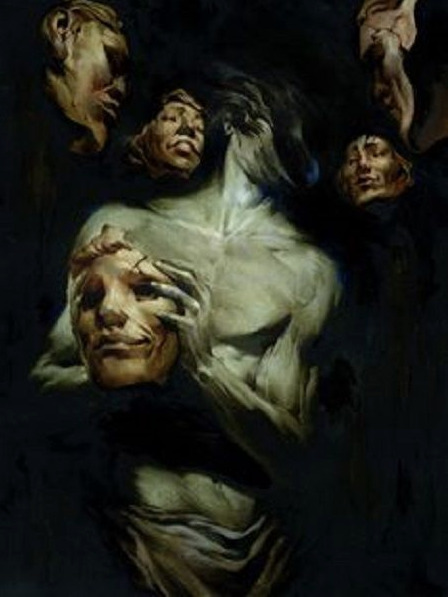

Again, back to the psychologist Carl Jung who looked to Eastern philosophy often as a reference for his work. In Eastern philosophy there is a common belief that under the mask is the godhead within each individual. To repeat from earlier, Jung believed the mask (or persona) was not the true self and could keep us from a much deeper, truer self which included a unified “collective unconscious” that all humans share. Opposed to a healthy mask essential for social life, if it completely overtakes the godhead (or the true self) chaos ensues within that individual because one is also identifying everyone else solely based on their masks. Divinity can no longer be seen in ones’ fellow man or woman. All humanity towards others can potentially be thrown out the window because of this difference in “mask” and atrocities can occur because of the dual nature of this thinking, rather than a unifying recognition of a collective unconscious in the “other”. And if there are enough individuals, disconnected from the godhead/true self, you get Nazis killing Jews. ALL mask. ALL persona. And no recognition of the holy selfhood in others, which ultimately stems from fear, blinding the individual... And taking us back to the film of our two fearful protagonists where the persona is being focused upon.
Does Elisabet understand all of this yet is unable to change herself? Or is her silence a rejection of the mask, a rebellion to conform and/or an attempt to get better? I don’t know.
We cut to Alma now in her bedroom and she is having a bad dream, shaking her head violently side to side. She wakes up and turns on a portable radio. Through the static it says “we don’t talk...listen...or understand”, then the voice says something about “Elisabet” and “by what means should...to enable.” Is the radio representative of her conscious mind tuning in to another frequency? I see no other reason for the radio that randomly appears out of the blue. We then see Alma going into Elisabet’s room, who is asleep. Alma begins watching her, smelling her, taking her in and even touches her face. She comments aloud how Elisabet’s face is slack and her mouth is swollen and ugly, then points out a wrinkle. She also mentions she can see a scar that Elisabet normally covers with makeup. Alma seems to relish in the fact she sees her this way, with her guard down and is able to feel superior in this moment. Alma hears a voice from another room that says “Elisabet” and leaves. Is it the radio from a few moments before? Elisabet then opens her eyes and looks into the camera again at us. She was not asleep. She was acting like she was sleeping. Even when Alma thought she was superior, Elisabet was still conscious. Perhaps because the unconscious never sleeps and Elisabet is representative of the unconscious.
"Elisabet” and Mr. Vogler
This next part becomes the most surreal and hardest to understand in my opinion. It is dawn now. Alma walks through the house, then is startled by Mr. Vogler, Elisabet’s husband. He calls Alma “Elisabet” and begins explaining how this has been hard on their little boy and continues further about their relationship. Alma once again says she is not his wife, as Elisabet creeps up from behind fixated on Mr. Vogler, lurking behind Alma’s shoulder in a two-shot closeup. Elisabet then guides Alma’s hand up to caress Mr.Vogler’s face, like Alma is her puppet. He is a strange, stern looking man with dark sunglasses. Alma now is under the spell that this is her husband, and says she loves him very much. We’re now watching in a reverse shot with Elisabet in the foreground, looking upset, as the other two are professing their love for one another. Alma moves her gaze to Elisabet in a conniving way and continues with Mr. Vogler in spite of Elisabet and they kiss. This is one of the most puzzling parts of the film to me and I found myself, mentally, wanting to check out. I had to consciously will myself to pay close attention and try to decode this. I think because it smashed the narrative I currently had going in my head of what I thought the film was. It’s as if Alma is now a vessel controlled by Elisabet, but why? Alma seems to be unaware of Elisabet, then aware. Is it because Alma, who adores Elisabet, can now see what it's like to be in her shoes? Is Elisabet upset because Alma is now privy to this? I think there is also a deeper subtext throughout the film where Alma is representative of the “conscious” and Elisabet the “unconscious”, which is running parallel to what is literally being shown, yet sometimes they blend like a dream. I’ve mentioned this once and is worth mentioning again. Alma/Elisabet and Mr. Vogler are laying down now and it seems they have just made love. Alma/Elisabet soon goes from tender to a violent struggle asking to be anesthetized! She cries saying she is cold and rotten and indifferent, “all lies and imitation”. The camera moves to an extreme closeup on Elisabet and fades to white. Does Alma clearly see Elisabet now? Was Alma able to break through Elisabet’s persona and truly feel what it was like for her with her husband and why they are estranged? Or it could very well be Elisabet detaching herself from the past experience and processing it this way as we see things from her point of view. And rather than Bergman showing a flashback with Elisabet and Mr. Vogler, he presents it this way with Alma standing in? I keep asking these questions because I feel the questions are more important than the answers. A film that just gives answers is not a film I am interested in seeing. If answers are the most important thing then one should just read the dictionary and not watch Persona.
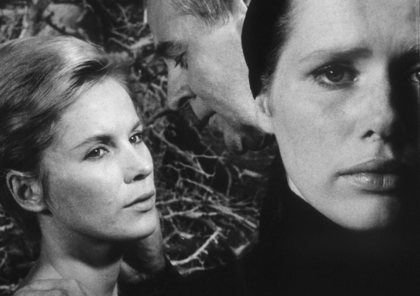
Alma Strengthened?
It is daylight now. Mr. Vogler is nowhere to be found. The scene starts as almost a complete nosequitar to what just occured. Alma sees Elisabet hiding something under her hand and makes her show what it is, like a student being disciplined by a teacher. It is a picture of Elisabet’s child. Alma asks her to talk about it. Elisabet shakes her head no, so Alma speaks for her. Alma’s attitude is similar to the Doctor’s now and is dressed exactly like Elisabet. Both have been in black most of the time, but now it is exactly matching, up to the detail of the black headband. So why is it important they dress in black? There must a reason, or several. I’ve seen some far out interpretations of what this film is, so I’m going to take a swing regarding a possible reason why this deep black is worn by the characters a majority of the time. Both are in a state of “dying”. Not in the physical sense, but psychologically...a chaos, a putrefaction (alchemy term). It doesn’t necessarily mean something so simple as “black is negative”/“white is positive”, but chaos/putrefaction/psychological death is an essential stage in life as fragmented reality occurs. It is impossible to stay in the light all the time. We are human. We are foulable beings tossed out of the Garden of Eden. We become confused, tragedy occurs, we become fearful. This is what life is and it’s inevitable. In this film’s case, unity does not reign but a duality of “Alma” and “Elisabet”, who must pass through this stage in the cycle in order to become unified and “in the light” again (atleast that’s the goal). The film is at a point in their lives in which chaos reigns, for reasons I’ve previously highlighted regarding the shadow, persona and self. And Carl Jung was very well-versed in Alchemy and it’s metaphors, as I assume Bergman was as well. Also, perhaps this connects to the morgue and skeleton during the beginning sequence
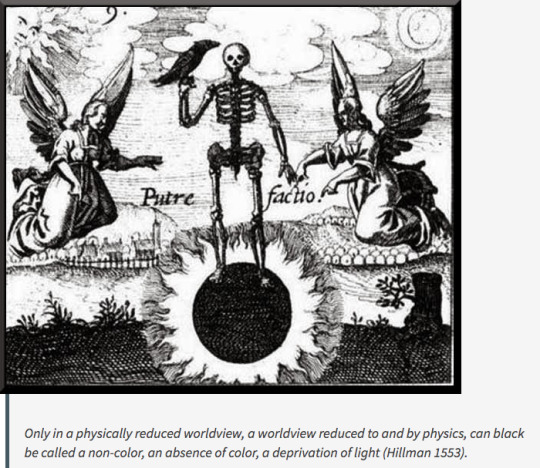
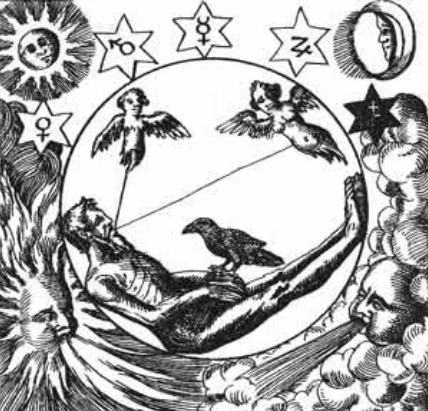
This is the most still and confident we have seen Alma in the film. Alma now begins to speak Elisabet’s story to Elisabet. This begins with a comment someone made to Elisabet at a party telling her that she had everything as a woman and an artist but lacked motherliness. Elisabet, in turn, then became pregnant. Elisabet next felt frightened, in over her head regarding all that pregnancy and motherhood required of her, but she “played the role”, put on the persona as a Mother. As Alma speaks, this is the most emotion Elisabet has shown in front of Alma the entire film, looking away, furrowing her brow, half-lit, terrified and found out! Alma continues, saying Elisabet had wished the baby would’ve been stillborn and a deep shame washes over Elisabet as she ducks her head. Alma is vicious, continuing on about how much Elisabet despised the baby, how it cried day and night and how she was scared with a bad conscience. The boy eventually went to live with relatives and Elisabet went back to the theatre. The boy loves his mother greatly, but Elisabet is always cold and indifferent...disgusted by him. The scene then starts over again, but with an over-the-shoulder shot onto Alma this time. The exact same dialogue is repeated and we have to again hear this painful dressing down of Elisabet and her resentful relationship with her son. The over-the-shoulder shot turns into two 1-shots, the same as with Elisabet the first time. Alma is also half-lit and I don’t think she ever blinks (which made me think of Paul Thomas Anderson’s film The Master scene at the table but between two men.)
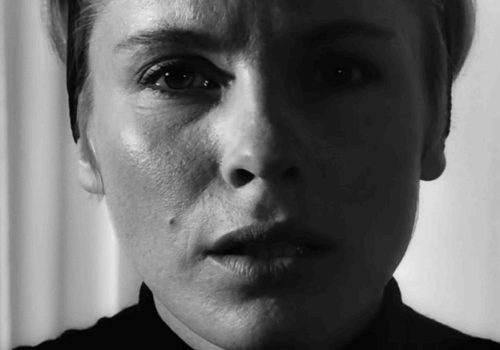

After Alma finishes (on a straight-ahead closeup) Elisabet’s face begin to take up the darkly lit half of Alma’s and she says, “No! I’m not like you”, “I’m Sister Alma, I’m just here to help you.” The two faces are now one. Duality to Unity. Both face-halfs are now in the light. Elisabet’s half appears and disappears a few times and then appears fully with punctuating music at the end of the scene, freeze-framing before fading to gray. It is striking how well their faces actually match up.
Obviously I’m going to expand on what I think happened here. Alma has entered Elisabet’s head so deeply, she was able to intuit this dark story about Elisabet and all of the unflattering details. Alma had to suffer to get to this point in order to enter Elisabet’s mind. And her entry is so intense she begins to lose herself. Her self-assuredness then quickly turns back to the vulnerable, scared Alma from before. Is this for the best Elisabet hears this? I kept thinking while watching that a regular moviegoer would interpret this as overly harsh by Alma. But it is also Elisabet becoming fully aware of why she decided to become pregnant in the first place and the subsequent emotional damage caused to her son. It then covers up to the point where she becomes mute during the Electra play. Elisabet needed Alma in order to get to this point of realization, as painful as it might’ve been.
A Standoff and Enigmatic Ending
We open on a 1-shot of Elisabet and a quick close-up catching a glimmer of defiance as Alma enters the room with her nurse’s outfit on now. Alma attempts to match her defiance and a stareoff ensues. Alma says she’s learned quite a bit and physically punches forward directly in front of an unflinching Elisabet. Alma then leans in and says she will never be like Elisabet (denying the shadow) and says she changes all the time and Elisabet will never get to her.
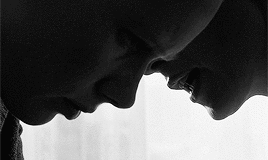
Another stareoff. Soon Alma breaks and begins nervously hitting the table.
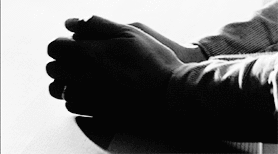
I have thought about this scene moreso than any other scene after watching the film. To me, there is so much to unpack. Alma is never able to get a leg up on Elisabet for very long. Again, I think this reinforces the metaphor that the conscious is unable to escape the unconscious. The same as a human being unable to escape the eye of God. This is why pre-determination was mentioned at the beginning of this post. If we are following this logic, Alma is predetermined not to gain a mental edge on Elisabet. She’s not formed to have the depth that someone like Elisabet has, no matter how much she’s “learned” or the mask she has tried to maintain. Elisabet knows her thoughts and has the mental ability to consume her and Alma knows this and it manifests in this anxious pounding on the table. Alma somewhat regains composure in her face but her words are gibberish nonsequitars...almost poetic but too garbled. Elisabet turns around and is in the foreground of a closeup 2-shot and mouths her words as if she is controlling what’s coming out of Alma’s mouth. Her mouth does not sync with the words but it does convey that Elisabet is in control. Alma continues to struggle, trying with all her might to articulate what she wants to say. But the gibberish continues, as if two minds are battling one another and Elisabet is winning, silent and calm, while Alma strains to squeeze out meaning verbally with little luck. Then, something revealing occurs... Elisabet runs her nails down the inside of Alma’s forearm until drawing blood, then goes down and begins sucking the blood like a vampire. Eventually Alma fights her off and begins slapping her repeatedly until it cuts to black. I did accidentally stumble across an article by BFI (British Film Institute) that states Bergman intentionally took Elisabet’s surname (Vogler) from a film called “The Magician” involving a character who was an artist that sapped the energies of others for his artistic gain. This makes sense because, as mentioned, Elisabet has used her mental energy to consume Alma by essentially playing the role as the mute patient. I don’t think this was an elaborate plan on Elisabet’s part, but kind of fell in her lap and she went with it. Also, due to the meta-nature of the film (inside the film projector, characters looking into the lens, etc) is Bergman also implicating himself? This film is very aware of itself and makes this clear several times. If I had to guess, Bergman is also saying he is not innocent, that he is using these characters/actors to play out his dream in order to gain a better of understanding of his own psyche. Also, are we, the audience, implicated as well? Elisabet looks at us, takes our picture, is aware of us...aren’t we placing ourselves inside these characters? We see their vulnerabilities, analyze their weaknesses, pass judgement...we use them in order to come to some type of new understanding within ourselves or for our own entertainment. Is the nature of art itself vampiric? In a sense, are Elisabet, Bergman, us and all artists vampiric in a way? Absolutely.

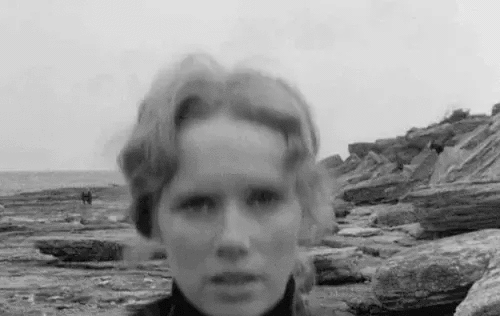
Then, right when you think you have all it figured out, there is another couple of scenes that make you think otherwise. You have to take one scene at a time with Persona. It is less of a narrative and more of a dreamlike poem. Alma nows enters the hospital room and Elisabet is in bed in a sedated state. Alma lifts her up slightly and says, “Nothing, That’s how it should be”, in a comforting manner and then lays Elisabet’s head back down. It then fades into a repeat of the Alma/Elisabet dream shot of them looking into the camera from earlier in the film, perhaps comforting us the audience, slowly waking us up after this traumatic, confusing ride we’ve been on as the film winds down... telling us it’s nothing, it’s okay, it’s how it should be. In turn, Alma wakes up in her bedroom in the Summer house. We are not in the hospital anymore. She peaks out and sees Elisabet packing her suitcase. Alma then begins putting all the summer outdoor chairs inside the house to pack up before she leaves. We do not see Elisabet again. What happened to her? Did she just leave without saying goodbye? Alma looks into the mirror and brushes her hair back as was done in the scene with Elisabet from earlier. A translucent image of Elisabet then appears behind her as seen below. She then smiles to herself and puts on her hat.
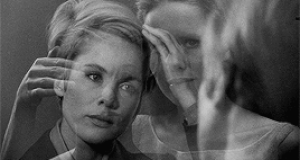
As she exits outside with her suitcase, there is a large concrete sculpture of a face that the camera moves to. It then flashes to a shot of Elisabet on stage as Electra. Alma walks to the bus. It then cuts to a camera sweeping down from above on a film set to capture Elisabet in frame. It cuts back to Alma getting on the bus to leave and the camera pans to dark rocks on the side of the road, then fades into the boy in front of the screen from the beginning of the film, reaching out to touch the screen. The screen includes a blurry image of what looks to be Alma that soon fades completely to white...a screen within a screen. As we, the viewers, reach out with our minds to comprehend exactly what the ending means, the shirtless boy with the glasses also reaches out to feel an image that disappears. The film roll runs out (literally on screen), falling off the spool and the projector burns out. The End.
To conclude, I just realized that attempting to analyze this film is almost like chasing a conspiracy theory, looking for connections that may or may not exist. I know that I missed some things. I know that I got some things wrong, but the joy of thinking about these films is that's okay. :)
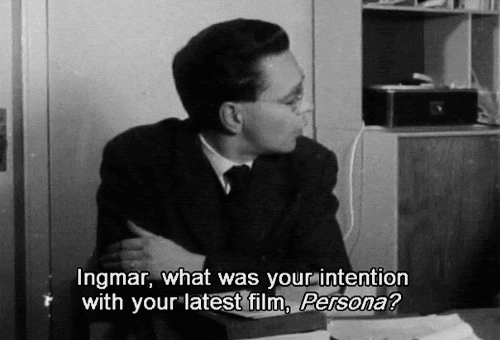
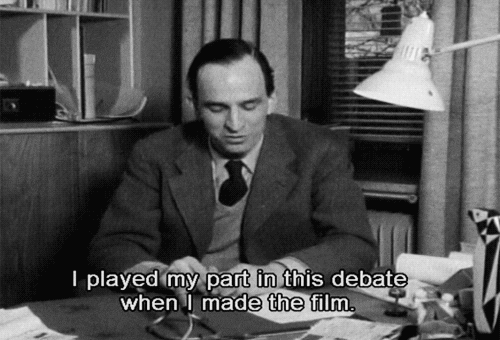

Also, in closing, I wanted to add an image that I had an immediate reaction to while looking for behind-the-scenes photos. As you can see, it is of Bergman, Liv Ullman and Bibbi Andersson. And as you know by now, this a very heavy, dark film on identity and internal chaos. But there is such love and sensitivity and thoughtfulness in this photo of three artists in the middle of making something extraordinary and revolutionary in cinema. It brings up some deep emotions in me because this is something I yearn for, almost like the boy touching the screen. I do truly feel I've had small glimpses of this type of satisfaction while working on my own projects, sparking a recognition, knowing it is rare and beautiful and transcendent, providing more to aspire to.
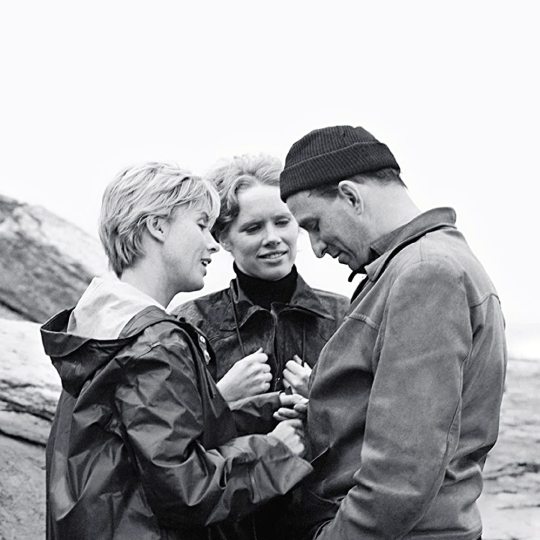
#cinema#persona#bergman#livullmann#bibiandersson#ingmarbergman#swedishfilm#filmanalysis#1966#criterion collection
6 notes
·
View notes